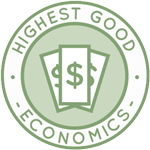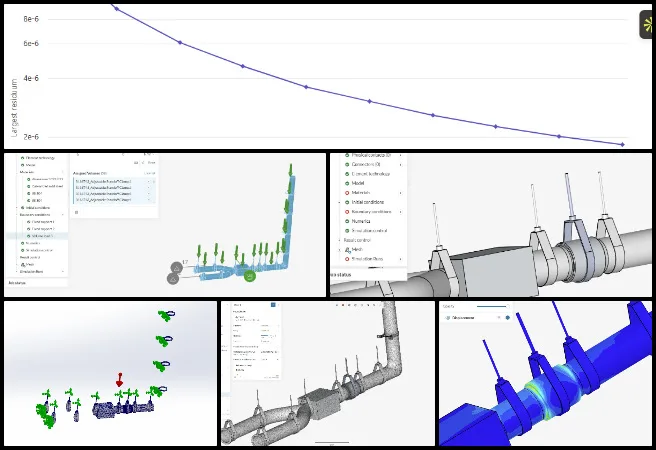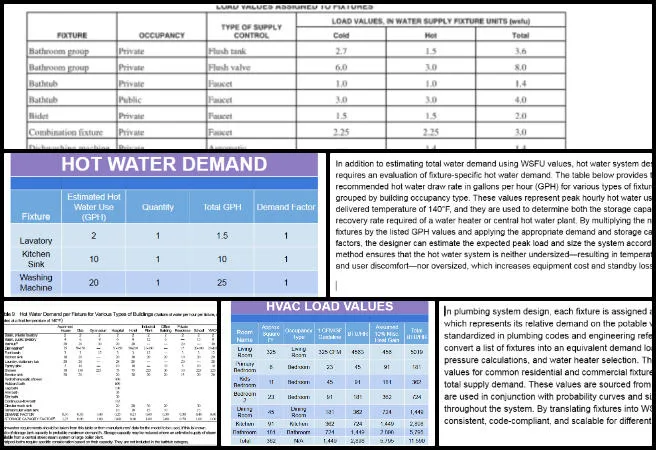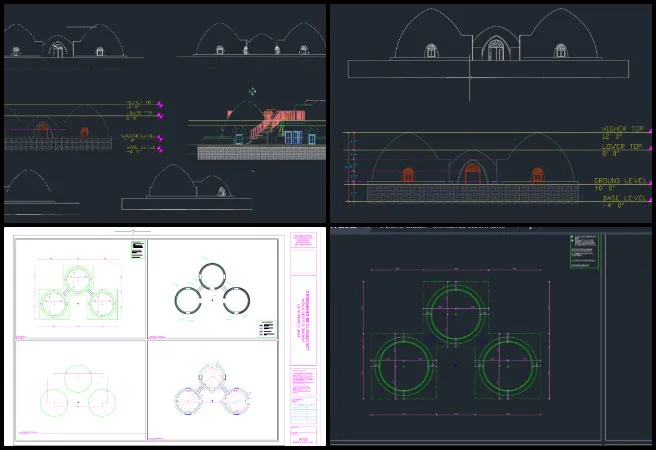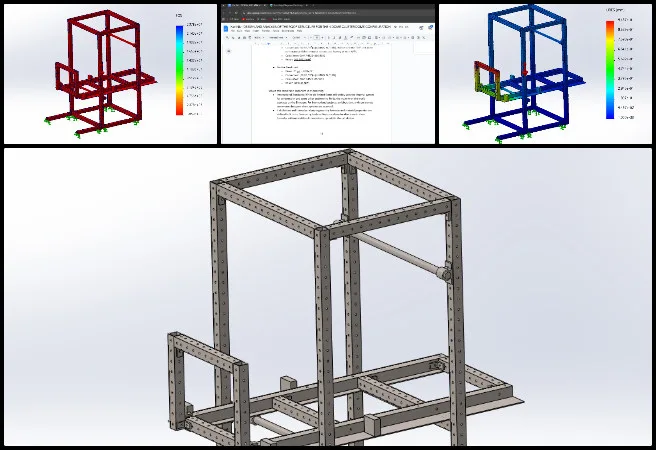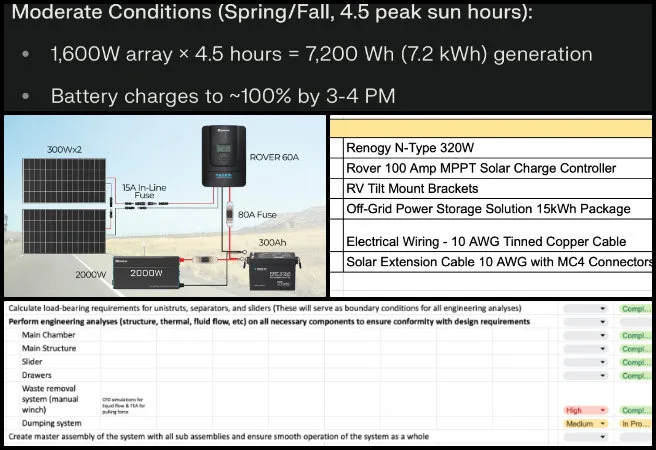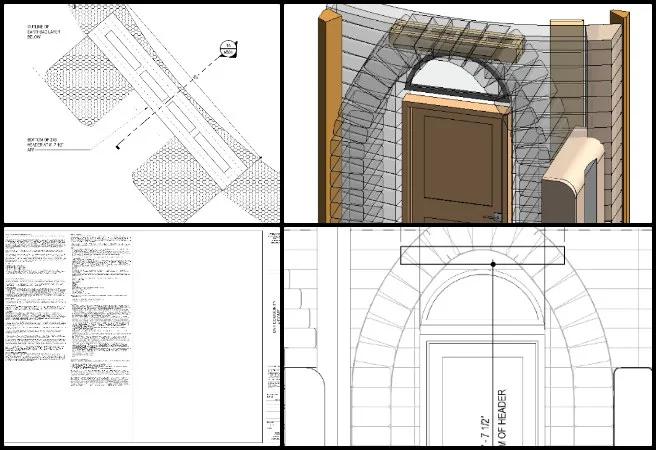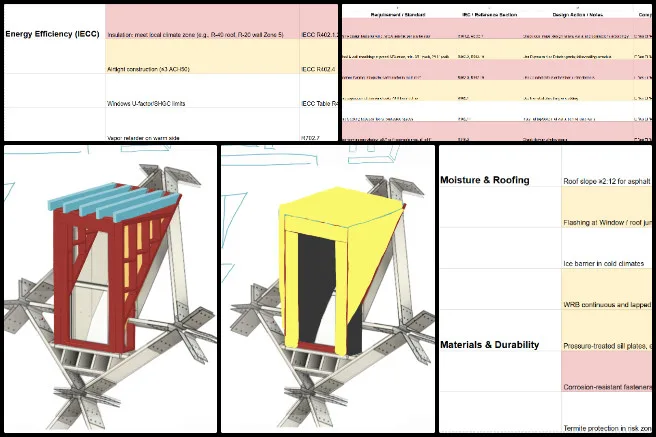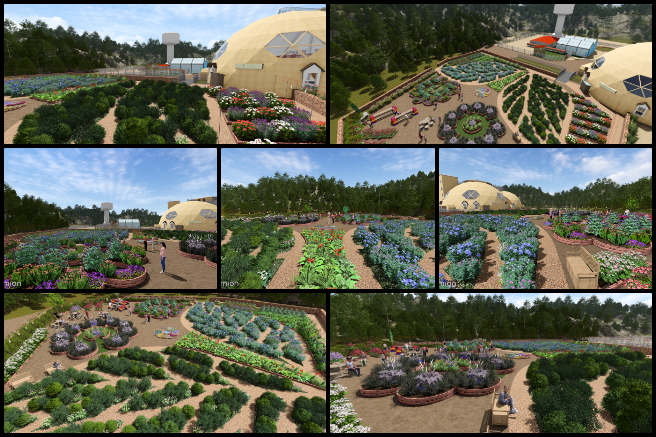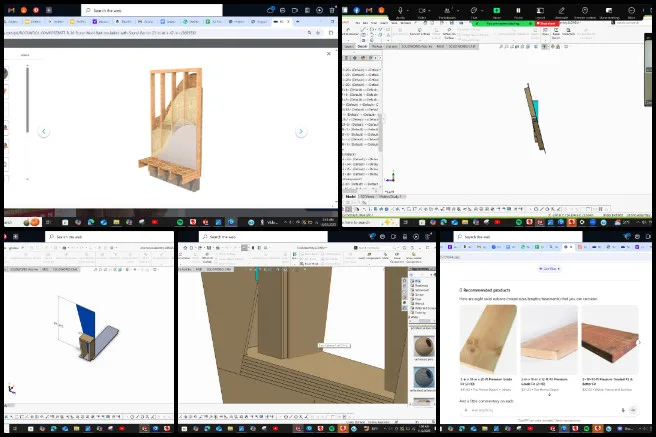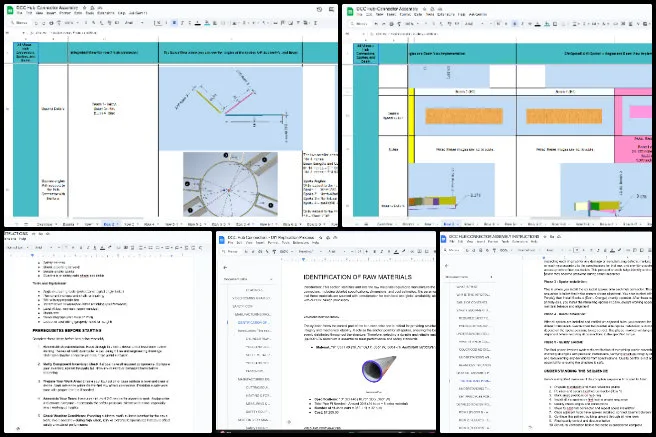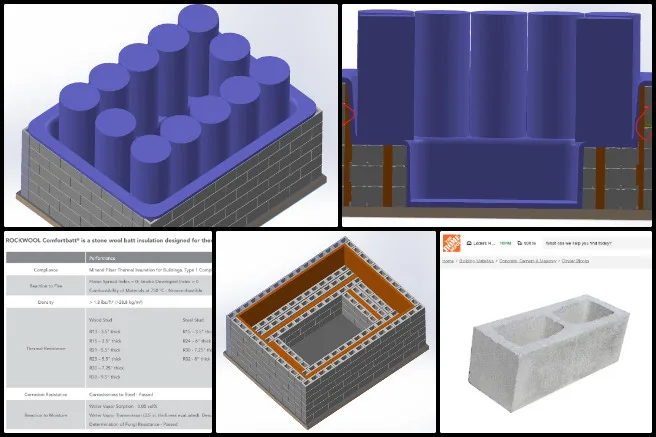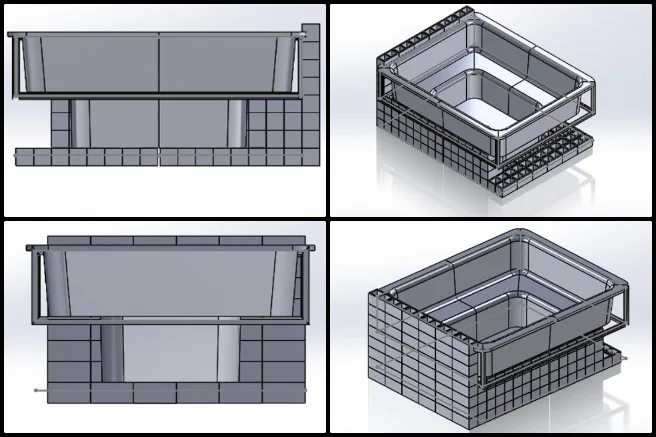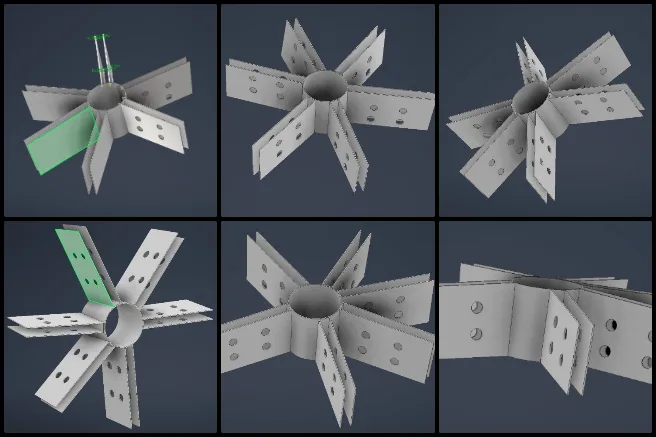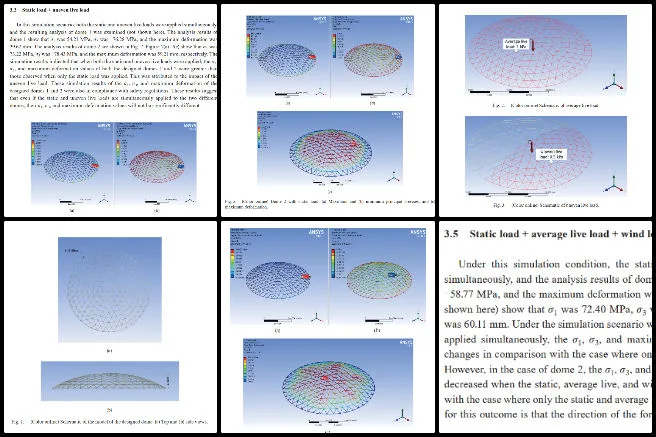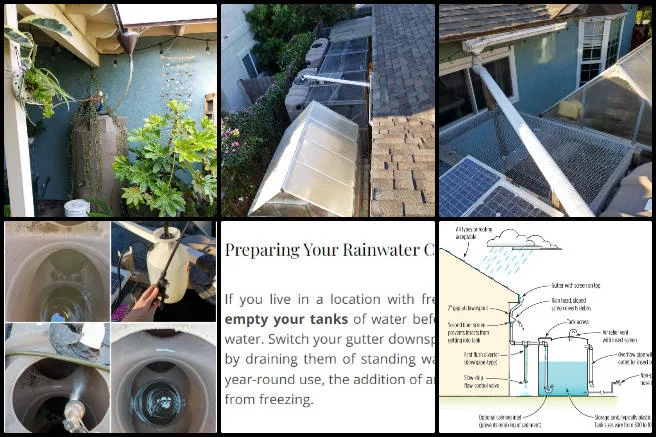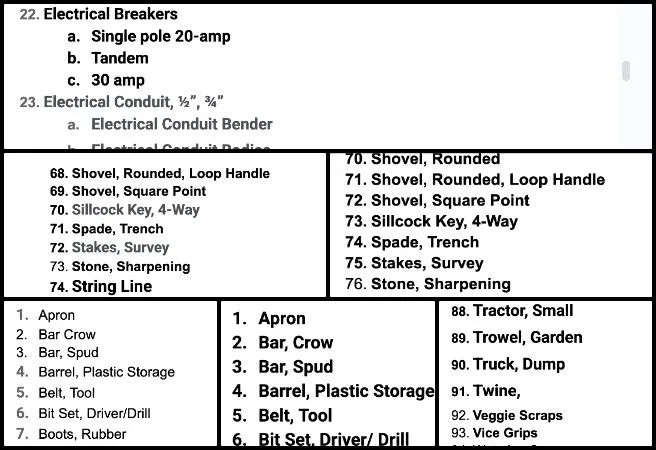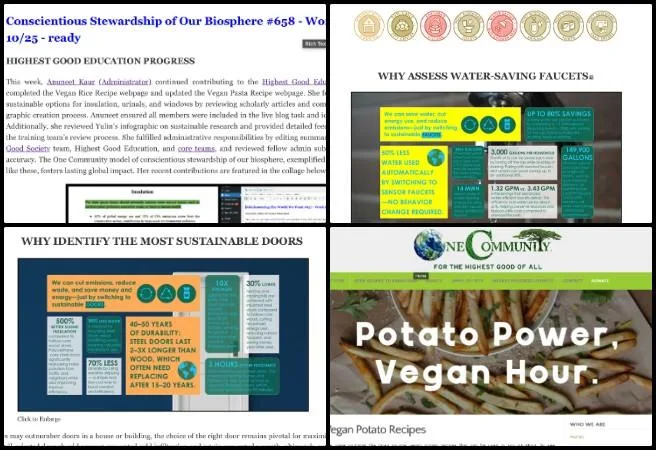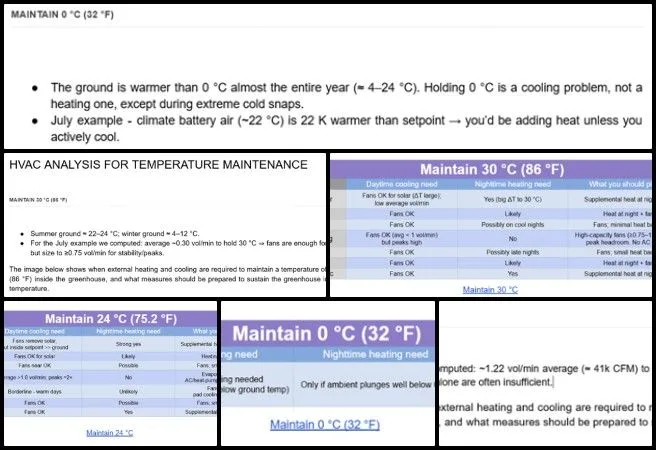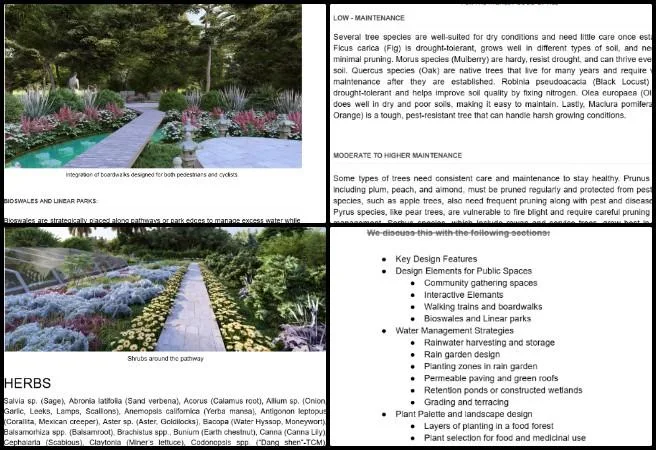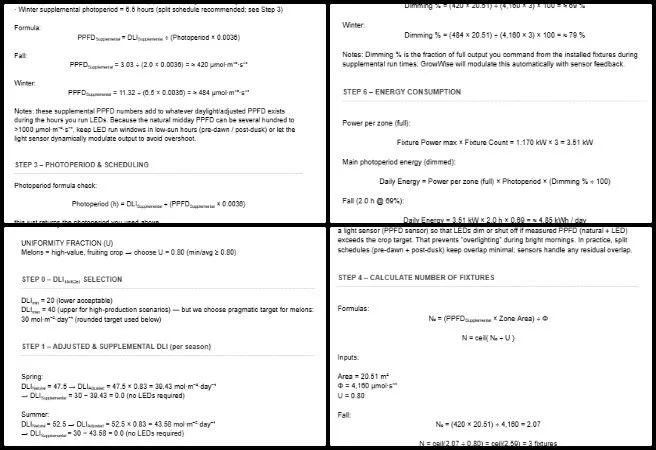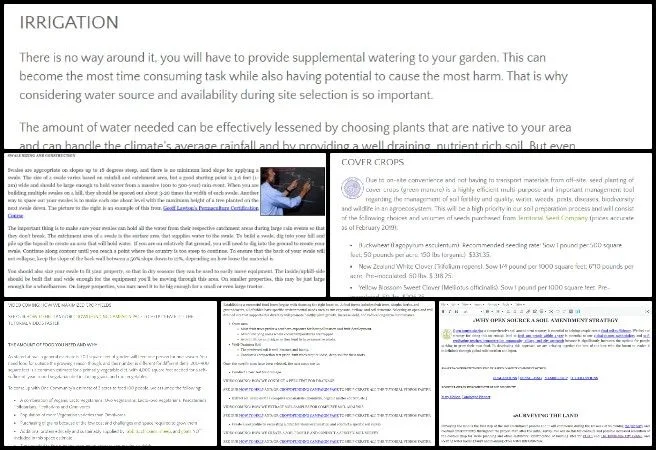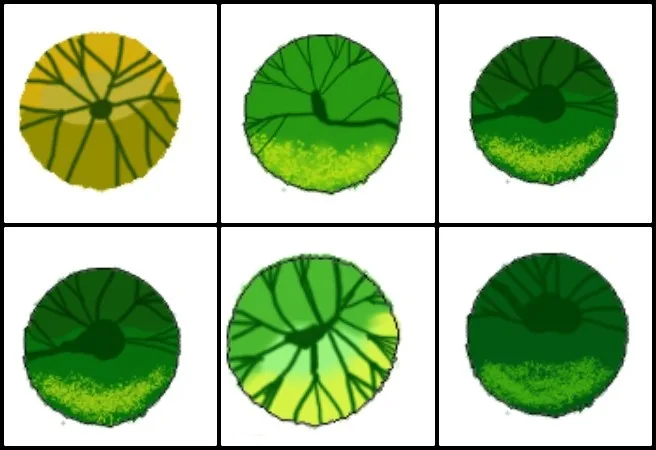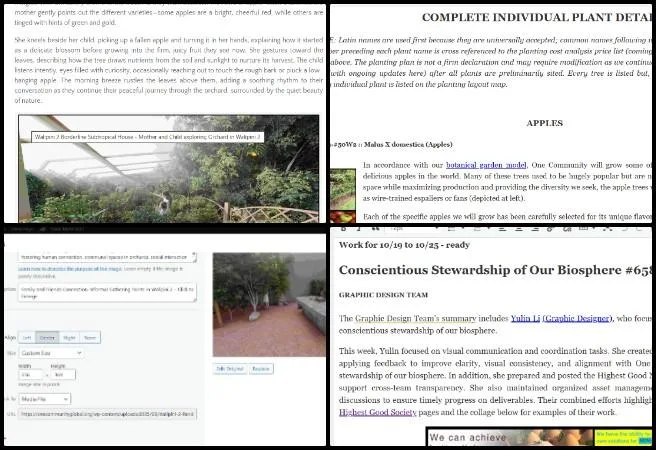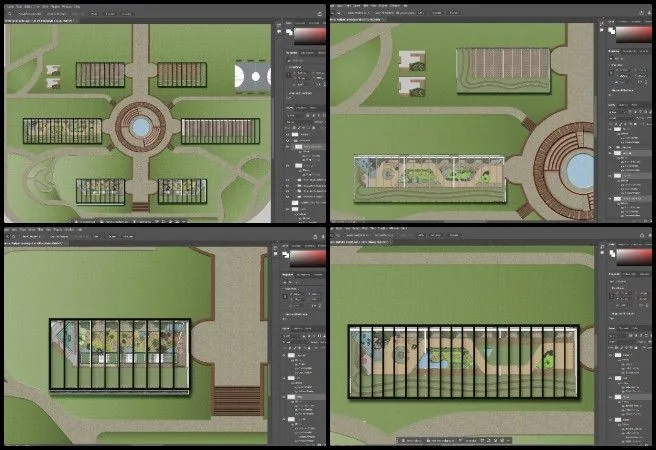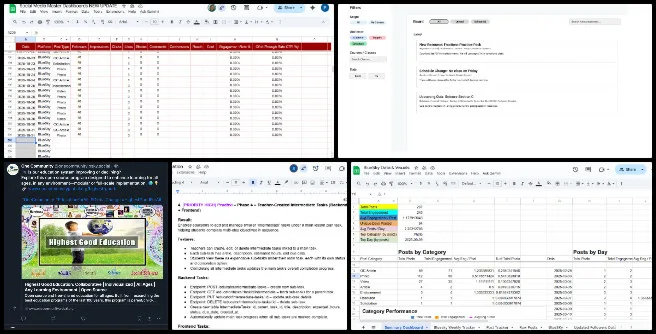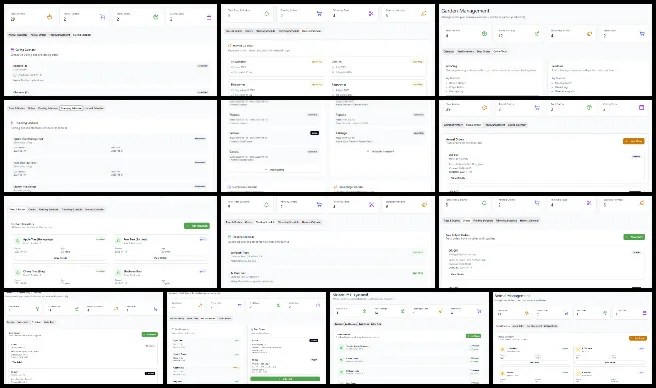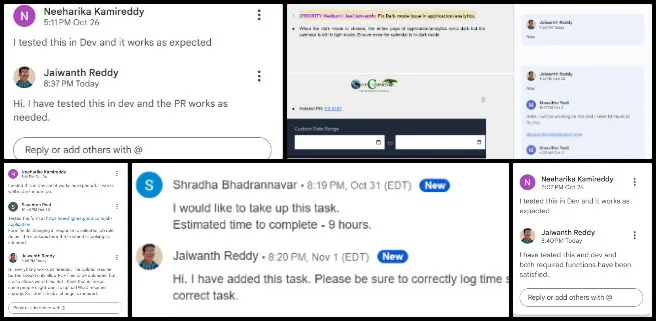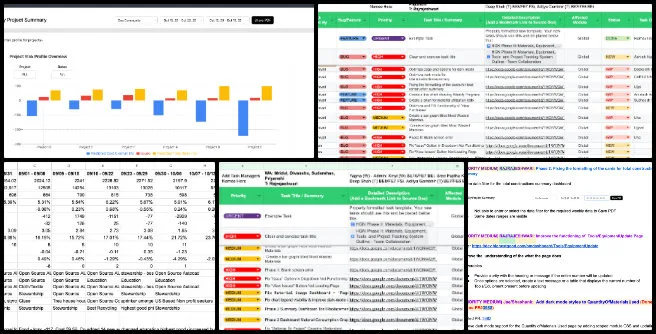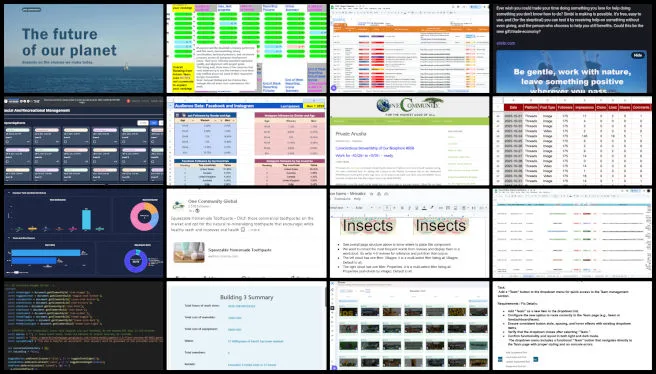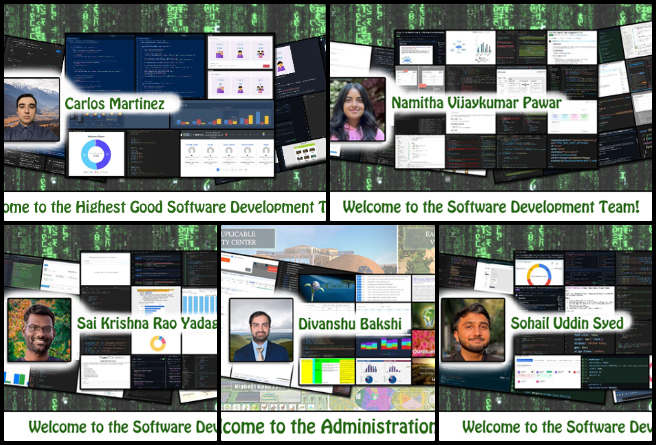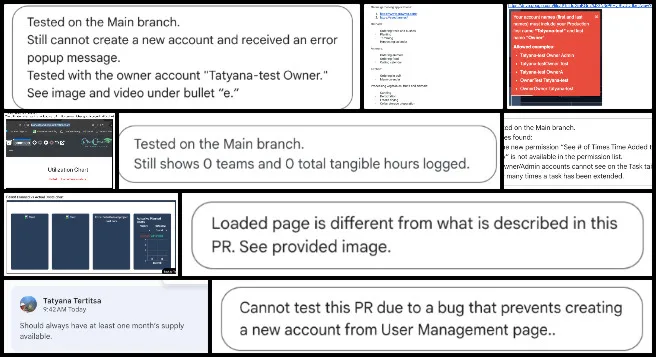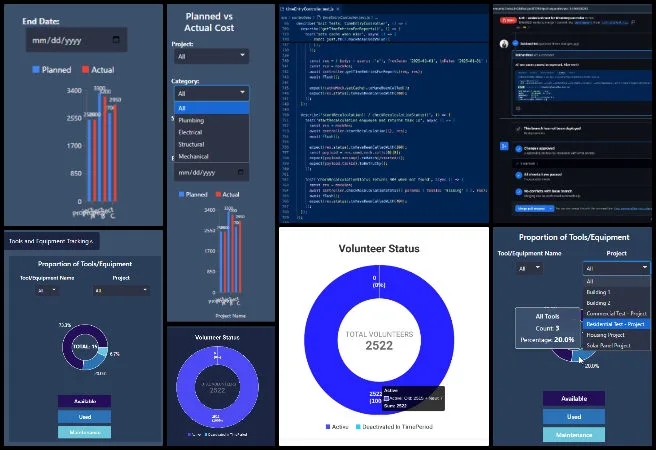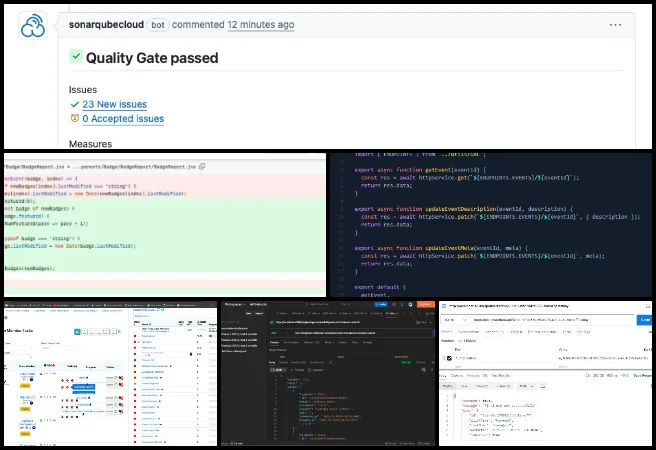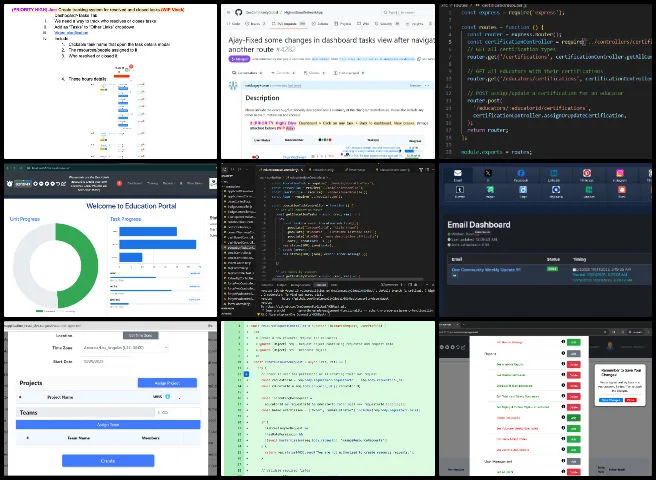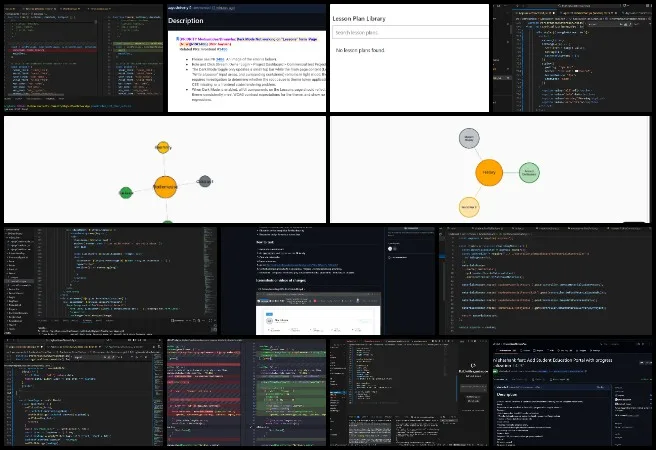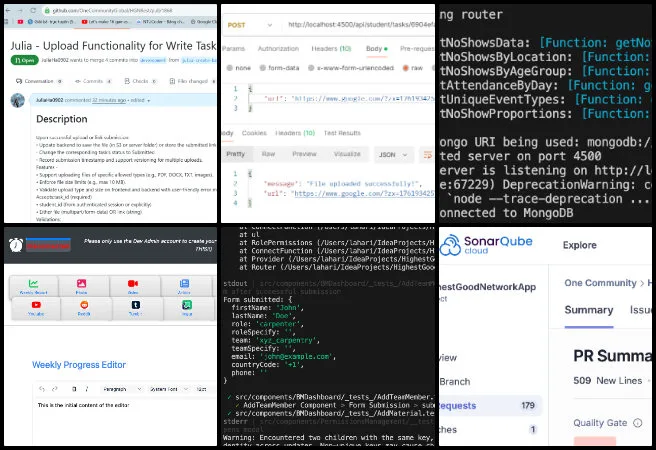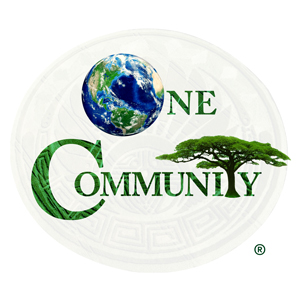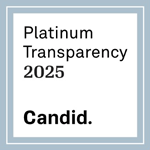
One Community Welcomes Sai Krishna Rao Yadagiri to the Software Development Team!
Posted on November 7, 2025 by One Community Hs
One Community welcomes Sai Krishna Rao Yadagiri to the Software Development Team as our newest Volunteer/Consultant!

Sai Krishna is an accomplished Full Stack Java Developer with 7 years of professional experience, specializing in designing, developing, and deploying enterprise-grade backend services and microservices. He has extensive hands-on experience with AWS cloud platforms, event-driven architectures using Kafka and Redis, and CI/CD automation with Jenkins, Maven, Docker, and Git. Sai Krishna is also highly skilled in system observability and resiliency, leveraging tools such as CloudWatch and Splunk. As a member of the One Community team, he has enhanced the Highest Good Network software by debugging and improving functionality with the MERN stack (React.js, Express.js, MongoDB). He played a key role in implementing a Donut chart for visualizing project planning costs across four categories, while also resolving critical frontend issues to improve usability and performance.
WELCOME TO THE TEAM SAI KRISHNA!
FOLLOW ONE COMMUNITY’S PROGRESS (click icons for our pages)
INVESTOR PAGES
GET INVOLVED
One Community Welcomes Sohail Uddin Syed to the Software Development Team!
Posted on November 7, 2025 by One Community Hs
One Community welcomes Sohail Uddin Syed to the Software Development Team as our newest Volunteer/Consultant!
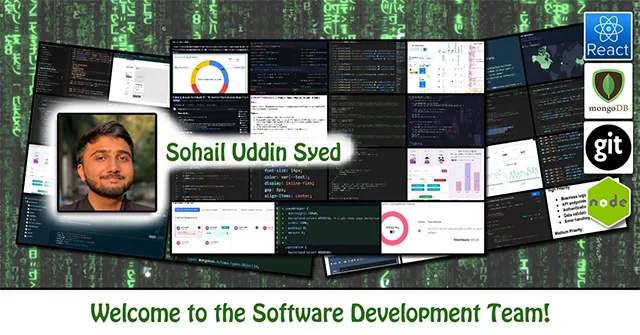
Sohail is a Software Engineer with expertise in MongoDB, ExpressJS, ReactJS, NodeJS, and AWS. He earned his Master’s in Computer Science from Florida State University, where he focused on algorithms, software engineering, and AI systems, conducting hands-on research in AI security and high-performance programming in C++. At One Community Global, Sohail contributes to the open-source Highest Good Network project by reviewing pull requests, developing an automated email escalation system for non-compliant accounts using cron scheduling and backend integration, building critical backend components for collaboration and time-tracking systems, and making UI enhancements to improve user experience.
WELCOME TO THE TEAM SOHAIL!
FOLLOW ONE COMMUNITY’S PROGRESS (click icons for our pages)
INVESTOR PAGES
GET INVOLVED
One Community Welcomes Namitha Vijaykumar Pawar to the Software Development Team!
Posted on November 7, 2025 by One Community Hs
One Community welcomes Namitha Vijaykumar Pawar to the Software Development Team as our newest Volunteer/Consultant!

Namitha is a Master’s student in Computer Science at the University of Alabama at Birmingham, with expertise in full-stack development, cloud computing, and machine learning. She has developed scalable web applications and deep learning models, including disaster tweet prediction using RNN–LSTM and CNN architectures, hotel management and e-commerce platforms, and breast cancer detection using TensorFlow/Keras. As a member of One Community Global, Namitha contributed to the Highest Good Network by building a User Skill Radar Chart, upgrading Job Posting Analytics with grouped and stacked bar graphs and dark mode, refining Job Analytics with stronger date validation and UI polish, and fixing linting in components such as TeamMembersPopup.jsx.
WELCOME TO THE TEAM NAMITHA!
FOLLOW ONE COMMUNITY’S PROGRESS (click icons for our pages)
INVESTOR PAGES
GET INVOLVED
One Community Welcomes Kanishk Agarwal to the Software Development Team!
Posted on November 6, 2025 by One Community Hs
One Community welcomes Kanishk Agarwal to the Software Development Team as our newest Volunteer/Consultant!
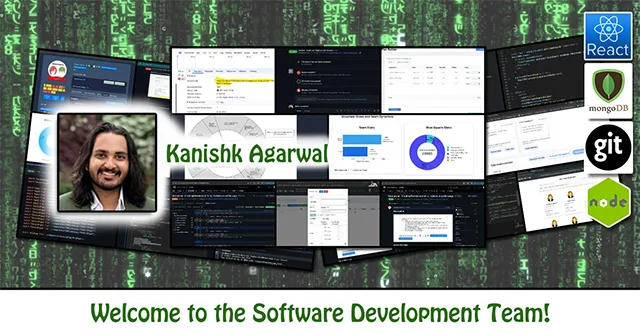
Kanishk holds a Master’s degree in Computer Science from Purdue University Fort Wayne and has professional experience in software engineering, full-stack development, and open-source collaboration. He is passionate about building scalable and reliable web applications and improving user experience through clean, maintainable code. As a member of the One Community Software Team, Kanishk delivered major upgrades to the Highest Good Network, implementing the Event Participation Analytics dashboard with functional dropdowns and CSS modules, resolving the white-screen init bug, blocking duplicate Timer resubmissions, and enhancing bell notifications with progress and deadline alerts.
WELCOME TO THE TEAM KANISHK!
FOLLOW ONE COMMUNITY’S PROGRESS (click icons for our pages)
INVESTOR PAGES
GET INVOLVED
One Community Welcomes Chaitanya Swaroop Kumar Allu to the Software Development Team!
Posted on November 6, 2025 by One Community Hs
One Community welcomes Chaitanya Swaroop Kumar Allu to the Software Development Team as our newest Volunteer/Consultant!

Chaitanya brings over 2.5 years of software engineering experience and excels at combining scalable system design with meaningful user experiences. He is passionate about building software that is both robust and resource-efficient. As part of the One Community Software Team, Chaitanya designed and developed an end-to-end access provisioning system that automated service setup for new hires across multiple internal tools. He also reviewed pull requests to strengthen team efficiency, code quality, and reliability on the Highest Good Network project. He is additionally designing an in-app replacement for email marketing to reduce external costs and improve privacy and integration for weekly subscriber updates.
WELCOME TO THE TEAM CHAITANYA!
FOLLOW ONE COMMUNITY’S PROGRESS (click icons for our pages)
INVESTOR PAGES
GET INVOLVED
Jump-starting Our Sustainable Future – One Community Weekly Progress Update #659
Posted on November 3, 2025 by One Community Hs
At One Community, we are jump-starting our sustainable future by creating practical, replicable models for holistic sustainability. Our all-volunteer team integrates solutions for food, energy, housing, education, economics, social architecture, and fulfilled living into a replicable framework for global stewardship. By freely sharing every design and process, we empower a worldwide network of teacher/demonstration hubs to regenerate the planet and create a world that works for all—for The Highest Good of All.
- Here’s our project overview
- Here’s our world-change methodology
- Here’s how this becomes self-replicating
- Here’s how we are open source and free-sharing all the do-it-yourself designs
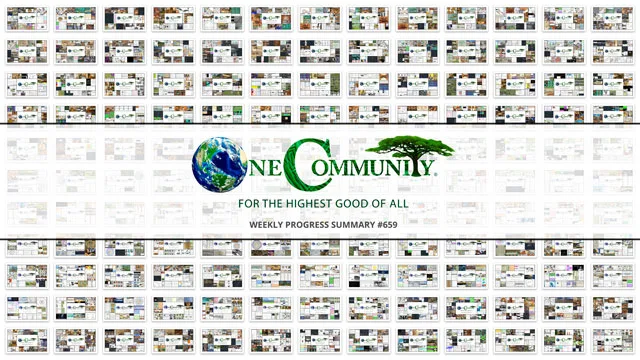
OUR MAIN OPEN SOURCE HUBS
Click on each icon to be taken to the corresponding Highest Good hub page.
One Community’s physical location will forward this movement as the first of many self-replicating teacher/demonstration communities, villages, and cities to be built around the world. This is the November 03, 2025 edition (#659) of our weekly progress update detailing our team’s development and accomplishments:
Jump-starting Our Sustainable Future
One Community Progress Update #659
DONATE | COLLABORATE | HELP WITH LARGE-SCALE FUNDING
CLICK HERE IF YOU’D LIKE TO RECEIVE AN EMAIL EACH WEEK WHEN WE RELEASE A NEW UPDATE
YOU CAN ALSO JOIN US THROUGH SOCIAL MEDIA
ONE COMMUNITY WEEKLY UPDATE DETAILS
HIGHEST GOOD HOUSING PROGRESS
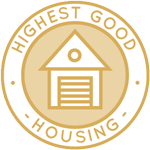 One Community is jump-starting our sustainable future through Highest Good housing that is artistic and beautiful, more affordable, more space efficient, lasts longer, DIY buildable, and constructed with healthy and sustainable materials:
One Community is jump-starting our sustainable future through Highest Good housing that is artistic and beautiful, more affordable, more space efficient, lasts longer, DIY buildable, and constructed with healthy and sustainable materials:
- Learn about: Our Upcoming Crowdfunding Campaign
- Learn about the different village models: 7 Sustainable Village Models
- Visit the open source portals for the first two: Earthbag Village OS Hub | Straw Bale Village OS Hub
This week, Ajay Adithiya Kumar Elancheliyan Tamilalagi (Mechanical Engineer) continued working on the ventilation system design for the Vermiculture Toilet component of the Earthbag Village. He worked on the assembly and simulation of the HVAC structural components, focusing on hanger and duct-support systems. He created part assemblies that included strut channel nuts, bolts, washers, and hinges, and configured them for the FEA setup. Using SolidWorks and SimScale, he ran static simulations to assess the load-bearing capacity of the hanger setup and evaluate stress distribution along the duct supports. Boundary conditions and gravity effects were applied to simulate real-world mounting conditions. He analyzed Von Mises stress and displacement results to verify design integrity and ensure adequate support for the HVAC load. The workflow included verifying mesh quality, adjusting material properties such as aluminum and galvanized steel, and reviewing simulation convergence through residual plots—all supporting One Community’s mission of jump-starting our sustainable future. Below, you’ll find some images of this work.
Derrell Brown (Plumbing Designer) continued working on the Earthbag Village 4-dome home final MEP report by reviewing feedback from the initial draft and applying updates across multiple sections. He reviewed the latest video reference and made corrections to the report’s images, graphs, tables, and charts to ensure consistency with project standards. These revisions included updating the HVAC Load Calculation Table and the Hot Water Demand Table to align with current design guidelines, and verifying related hand calculations for accuracy and clarity. He also added introductory descriptions to tables and images throughout the report to provide clearer context for each data set and visual reference, further contributing to jump-starting our sustainable future. See below for some of the pictures.
Fangting Xu (Interior Design Intern) continued working with ADA codes related to building connections for ADA 3-dome cluster of the Earthbag Village. This week she developed detailed floor plans and elevations for the 3-Dome Cluster ADA by referencing CAD files of the 4-Dome Cluster. She drew the excavation plan, first floor dome location plan, first floor wall type drawing, first floor dimension plan, and elevation dimension drawings, ensuring alignment between plan and section drawings for accurate construction documentation. Her work supports accessible design, and jump-starting our sustainable future. See below for some of the pictures related to this work.
Karthik Pillai (Mechanical Engineer) continued work on the Vermiculture Toilet and 4-dome home components of the Earthbag Village. This week was focusing on refining the report for the 4-Dome Cluster Roof project in accordance with Jae’s instructions, ensuring that the content reflected a professional and formal tone suitable for documentation purposes. He reviewed and adjusted the structure and language of the report to improve clarity and coherence, and uploaded the necessary project images to his drive, linking them appropriately within the document to visually support the technical details. In relation to the Vermiculture Toilet project, Karthik completed the work on the waste dumping mechanism and progressed with the preparation of the corresponding report. Design modifications were incorporated based on Jae’s input and aligned with Rahul’s adjustments to the drawer assembly. Additionally, the factor of safety for the updated design was evaluated, and the results indicated that the values remained within the acceptable range of industry standards. His engineering updates continue jump-starting our sustainable future. The related visuals are shown below.
Malhar Solanki (Mechanical Engineer) continued working on the Vermiculture Toilet component of the Earthbag Village also. This week he worked on the bill of materials and actual costs for the solar panels, power backup, and storage systems. He completed the material sheet for bolts and fasteners. Work began on collecting cost data and identifying potential platforms for purchasing power source equipment. All previously completed tasks were reviewed, and the full project document was read to identify remaining requirements for project completion, contributing to jump-starting our sustainable future. Review the latest HVAC updates in the images below.
Michaela Silva (Architect) continued developing details in the construction documents for the Earthbag Village 4-dome home. This week she created a new sheet to further document detailed information for the earthbag construction project. She modeled the front door structural header above the transom window to ensure that the earthbag layers were properly supported by the adjacent earthbags on both sides of the door and window. She also produced elevation and plan details showing the header’s location, dimensions, and 2×6 framing configuration. Her architectural detailing strengthens natural-building systems and supports jump-starting our sustainable future. Check out the construction detail visuals below.
DUPLICABLE CITY CENTER PROGRESS
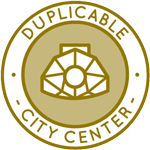 One Community is jump-starting our sustainable future through a Duplicable and Sustainable City Center that is LEED Platinum certified/Sustainable, can feed 200 people at a time, provide laundry for over 300 people, is beautiful, spacious, and saves resources, money, and space:
One Community is jump-starting our sustainable future through a Duplicable and Sustainable City Center that is LEED Platinum certified/Sustainable, can feed 200 people at a time, provide laundry for over 300 people, is beautiful, spacious, and saves resources, money, and space:
- Learn about this building and it’s function: Duplicable City Center Open Source Hub
This week, Andrew Tzu-Chien (Industrial Designer) continued working on the Duplicable City Center Dormer second-floor window. He added more detail to the window frame concept sketch, prepared a presentation, and briefed Ariana on the framing work completed so far while outlining the next steps. He also reviewed feedback from Jae and made iterations to the framing concept. In addition, Andrew researched common framing practices and relevant building codes to use as guidelines for the design. This open source Duplicable City Center project demonstrates jump-starting our sustainable future. For more details, refer to the image below.
Anjana Reddy Chittireddy (Architectural Designer) continued working on the Duplicable City Center external renders. This week she was focusing on implementing feedback and completing updates to the renders. She refined the central part of the model, adjusting the placement of lemon trees, modifying the ground texture, and making visual improvements including removing pets and adding a mountain backdrop. She also reviewed the previous feedback to ensure all requested corrections were addressed and the renders aligned with the project’s visual and design standards. This open source Duplicable City Center project contributes to jump-starting our sustainable future. Explore the landscape visuals in the image below.
Ariana Virginia Gutierrez Doria Medina (Industrial Designer) continued working on the Duplicable City Center window and door framing by researching materials to identify better pricing and quality options for the window insulation support structure. She found small gaps in the design that could affect the insulation system, leading to the redesign of certain components to fully close those areas and improve overall performance. This open source Duplicable City Center project demonstrates jump-starting our sustainable future. See the presentation and research highlights below.
Ayushman Dutta (Mechanical Engineer) continued working on the City Center Dome Hub Connector Engineering and DIY manufacturing. This week he worked on the assembly instructions and made formatting corrections to improve clarity. He also worked on the cutting sheet document and had a meeting with the team to discuss progress. Ayushman made changes to the assembly instructions document based on received feedback. He created a feedback document for row 2 of the assembly sheet and shared it with the team. This open source Duplicable City Center project demonstrates jump-starting our sustainable future. Review the connector analysis visuals below for more details.
Bevan Chiu (Mechanical Engineer Volunteer) continued his work finishing the City Center Eco-spa Designs. This week he was working on the development of an initial CAD model of a cinder block understructure frame with insulation boards potentially made from rockwool. In the model, the cinder blocks function as the structural underbody, represented in gray, while the insulation boards, shown in orange, serve as a potential sustainable solution. The initial configuration is designed for twelve people but currently lacks space for plumbing. Bevan is collaborating with the team to determine an effective method to integrate the plumbing within the structure. This open source Duplicable City Center project contributes to jump-starting our sustainable future. For more details, refer to the image below.
Nikhil Bharadwaj (Mechanical Engineer) continued working on the City Center Dome Hub Connector Engineering and dome assembly. This week he was focusing on the Row 6 hub connectors, maintaining a consistent design approach across previous sections. He collaborated with Shreyas, who then completed the remaining two hub connectors for the same row. He then integrated all three Row 6 hub connectors into the complete dome assembly and shared the updated model with Koushik for beam trimming and verification. Nikhil collected feedback on the assembly spreadsheet from the team and began work on the README document to serve as a supporting document for the assembly spreadsheet. One Community’s open source Duplicable City Center is an example of jump-starting our sustainable future. The visuals below highlight his assembly progress this week.
Sandesh Kumawat (Mechanical Engineer) continued developing the City Center Eco-spa Designs. He did this by developing a hybrid structural concept that combines a steel frame with cinder block walls to balance strength, modularity, and sustainability. After evaluating multiple insulation and construction options, Sandesh determined that polyurethane spray foam, while thermally efficient, is not a sustainable or replicable choice for this project. As a result, Sandesh finalized a more sustainable alternative using cinder blocks with a Rockwool (mineral wool) insulation system, which provides excellent thermal resistance, moisture tolerance, and long-term durability without toxic off-gassing. Discover One Community’s open source Duplicable City Center, which exemplifies jump-starting our sustainable future. See the visuals below for a closer look.
Shreyas Nagaraj (Design Engineer) made more updates to the City Center Dome Hub Connector Engineering and beams for the Duplicable City Center. He refined and finalized model updates for Row 6.1, Row 6.2, and Row 7.1. Each five-hour work session focused on refining the model and implementing necessary adjustments to the hub connector components as part of the ongoing structural updates to the dome system. This open source Duplicable City Center project exemplifies jump-starting our sustainable future. For more details, refer to the image below.
Srujan Pandya (Mechanical Engineer) continued his focus on developing the dynamic simulation setup for earthquake analysis updates for the City Center Dome Hub Connector Engineering in collaboration with Dipak. He assessed the feasibility of implementing the model in Autodesk Inventor as well as more advanced environments like Ansys, Abaqus, or Comsol to enhance accuracy and realism. Srujan incorporated the new setup details and resulting insights into the main report. Additionally, he provided further detailed feedback on the spreadsheet shared by Nikhil to maintain accuracy and consistency across datasets. The Duplicable City Center demonstrates jump-starting our sustainable future through open source solutions that can guide people. The images below illustrate aspects of this work.
Vineela Reddy Pippera Badguna (Mechanical Engineer) continued contributing to the Duplicable City Center Water Catchment designs. This week was about updating the report with new content and making several adjustments to the spreadsheet to reflect recent modifications. She also reviewed information from different websites to learn about rainwater collection barrels and tanks, rainwater harvesting practices in cold climates, and the use and maintenance of rain barrels in winter. This open source Duplicable City Center project contributes to jump-starting our sustainable future. See the updated rainwater catchment data and design visuals below.
HIGHEST GOOD FOOD PROGRESS
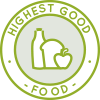 One Community is jump-starting our sustainable future through Highest Good food that is more diverse, more nutritious, locally grown and sustainable, and part of our open source botanical garden model to support and share bio-diversity:
One Community is jump-starting our sustainable future through Highest Good food that is more diverse, more nutritious, locally grown and sustainable, and part of our open source botanical garden model to support and share bio-diversity:
- Learn about the structures: Hoop House Hub | Aquapini & Walipini Open Source Hub
- See what we’ll be growing: Gardens & Hoop Houses | Large-scale Structures | Food Forest | TA
This week, the core team continued working on the Master Tools, Equipment, and Materials and Supplies List for the Large-scale Garden, Botanical Garden, and other Highest Good Food components. The team created comparison lists for the Master Tools, Equipment, Materials/Supplies document against the GT, CHICK, and RAB documents. The CHICK and RAB documents were noted to be nearly identical. All remaining project documents will be compared to the Master document, with some cross-referenced to similar documents used by the core team. The Highest Good Food initiative is a key component of One Community’s open source plans, focused on jump-starting our sustainable future and exemplifying the organization’s commitment through innovative design and implementation. Below are some images showcasing this work.
Anuneet Kaur (Administrator) continued her new focus on the design of the Transition Food Self-sufficiency Plan components of the Highest Good food initiative. Anuneet completed the Vegan Rice, Vegan Pasta, Vegan Potato, and Vegan Sweet Potato webpages. She researched the most sustainable options for insulation, urinals, and windows by reviewing scholarly articles and compiling relevant statistics for the graphic creation process. Anuneet ensured all team members were included in the live blog task and identified any missing team members. Additionally, she reviewed Yulin’s infographic on sustainable research and provided detailed feedback, while also participating in the training team’s review process. Anuneet also fulfilled administrative responsibilities by editing summaries and collages for the Highest Good Society, Highest Good Education, and Core Teams, and reviewed fellow administrators’ submissions for completeness and accuracy. The One Community model of jump-starting our sustainable future, exemplified by sustainably built classrooms and housing studies like these, fosters lasting global impact. Her recent contributions are featured in the collage below.
Chelsea Mariah Stellmach (Project Manager) continued her new focus on the Transition Food Self-sufficiency food and inventory tracking software plans. Chelsea added the first version of the mockups to the document. She requested feedback on the mockups from several consultants and contacted Jae to determine tasks that could be completed while Ravi revised the mockup based on prior feedback. Chelsea instructed Ravi to replace one mockup’s pop-up feature with a slide-in panel to improve user experience. All feedback was recorded in the Google document, including captured images and notes for reference. As an essential aspect of One Community’s open source goals, the Highest Good Food initiative supports jump-starting our sustainable future. The following images provide a view of her contributions.
Dirgh Patel (Mechanical Engineer) continued assisting with the Climate Battery design updates. He analyzed the greenhouse’s thermal control requirements by calculating when external heating, cooling, or ventilation would be needed to maintain internal setpoints of 30°C, 24°C, and 0°C. Dirgh evaluated whether HVAC systems were required for each target temperature and determined the measures needed to maintain stable internal conditions. He compared temperature maintenance strategies for all three temperature levels, determining how equipment such as fans, evaporative pads, and heating units could be used throughout different months to balance the internal and external temperature variations. Dirgh developed a framework to determine when fans alone could regulate the greenhouse environment versus when additional systems must operate. One Community’s open source mission is powerfully reflected in the Highest Good Food initiative, which is focused on jump-starting our sustainable future. See the images below to review this week’s updates.
Gayatri Pandkar (Architect) continued writing content for the various components of the Aquapini and Walipini aspects of the Highest Good Food initiative. She worked on revising the detailed report content for the southeast and southwest areas. Gayatri edited the captions for the rendered images of these spaces and suggested suitable titles for both areas. In addition, she updated the index, adjusted the formatting of the report to align with the website requirements, and ensured overall consistency and accuracy across all document sections. The Highest Good Food initiative is a key part of One Community’s open source platform, focused on sustainable and participatory development while supporting jump-starting our sustainable future. Visual examples from her work are presented below.
Jay Nair (BIM Designer) continued development of the Aquapini and Walipini Planting and Harvesting documents. He worked on calculating the lighting energy requirements for Walipini 1, ensuring the data aligns with current fixture specifications and project parameters. Jay also developed a concept for a lighting energy calculator aimed at streamlining and standardizing future calculations, focusing on improving accuracy, usability, and efficiency for greenhouse energy analysis. The Highest Good Food initiative is a key part of One Community’s open source platform, focused on sustainable and participatory development while supporting jump-starting our sustainable future. See below for pictures related to this work.
Keerthi Reddy Gavinolla (Software Developer) continued her work on the Soil Amendment component of Highest Good Food. She updated the City Center Team Blog #658. She continued refining the Soil Amendment and Initial Off-grid Site Preparation webpage, updating section layouts and ensuring consistency across all content. Keerthi added links to images, adjusted captions, improved spacing, and aligned text with related visuals. She also verified headings and bullet points for proper hierarchy and readability. Additionally, Keerthi completed her admin work for the week. Built on One Community’s open source foundation, the Highest Good Food initiative is dedicated to jump-starting our sustainable future, empowering communities through self-sustaining systems. Visual examples of her work are shown below.
Nitin Parate (Architect) continued contributing to the Aquapini and Walipini renders and layout graphics. His work focusing on developing and rendering the Walipini 2 plan. His work focused on updating the Walipini planting plan in alignment with the planting legend provided by Jae. Corrections were made to Layers 1, 2, 3, and 4 to ensure tree types and placements matched the legend accurately. The updates aimed to maintain consistency, accuracy, and coherence within the overall planting layout. Additionally, all planting legends were extracted from the PSD file and organized for reference to streamline the layout process. The extracted elements were then integrated into the Walipini plan to ensure accurate representation of planting details and alignment with the updated landscape design and project requirements. The Highest Good Food initiative is a key part of One Community’s open source platform, promoting regenerative and participatory development while jump-starting our sustainable future. Images below showcase his contributions.
Pallavi Deshmukh (Software Engineer) continued working on the Aquapini and Walipini Planting and Harvesting web details. She developed new content for Blog 658 and worked with her teammates to review input and integrate feedback to produce a clear, consistent final version. Pallavi applied Jae’s feedback and integrated the Walipini #2 content provided by Silin, then updated the Walipini #2 page with contributions from Junyi Shi. Her updates included revising text, links, and images to meet current project requirements before submitting the revised version for Jae’s review. Pallavi also completed one interview and submitted the related details. In alignment with One Community’s open source objectives, the Highest Good Food project integrates the concept of jump-starting our sustainable future into a larger vision of regenerative living. Her contributions are highlighted in the collage below.
Shivangi Varma (Volunteer Architectural Designer And Planner) continued the redesign of the Highest Good Food overall presentation, currently focused on the Aquapini and Walipini masterplan render. She finalized the shadows, beveling, textures, and depth of the landscape elements within the structures on the masterplan render, added detailed plants to the structures for the plan renders, made final edits on the HGF masterplan render, and detailed the landscape for the HGF masterplan render. The Highest Good Food initiative plays a leading role in One Community’s open source platform by promoting sustainable and participatory development focused on jump-starting our sustainable future. Below are visuals highlighting this work.
HIGHEST GOOD ENERGY PROGRESS
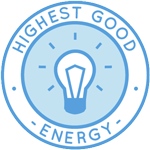 One Community is jump-starting our sustainable future through Highest Good energy that is more sustainable, resilient, supports self-sufficiency and includes solar, wind, hydro and more:
One Community is jump-starting our sustainable future through Highest Good energy that is more sustainable, resilient, supports self-sufficiency and includes solar, wind, hydro and more:
- Learn about the open source sustainable-energy foundations: Solar, Hydro, and Wind
- Explore our research into the most sustainable products and companies for saving water and energy: Insulation, Eco-laundry, Lightbulbs and Light Bulb Companies, Doors and Door Companies, Windows and Window Companies, Toilets, Faucets and Faucet Accessories, Urinals, and more.
This week, the core team continued contributing to the Highest Good Energy initiative. The team scheduled, prepared for, and completed an interview with Vishal Phogat. They spent the rest of the week reviewing documents related to Highest Good Energy and preparing to manage a team for the Earthbag Village plans. Their preparation included reviewing documents and webpages containing Earthbag Village project details. The Highest Good Energy initiative plays a leading role in One Community’s open source platform by promoting sustainable and participatory development focused on jump-starting our sustainable future. Below are images related to this project.
HIGHEST GOOD EDUCATION PROGRESS
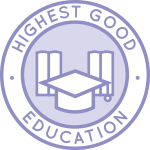 One Community is jump-starting our sustainable future through Highest Good education that is for all ages, applicable in any environment, adaptable to individual needs, far exceeds traditional education standards, and more fun for both the teachers and the students. This component of One Community is about 95% complete with only the Open Source School Licensing and Ultimate Classroom construction and assembly details remaining to be finished. With over 8 years of work invested in the process, the sections below are all complete until we move onto the property and continue the development and open sourcing process with teachers and students – a development process that is built directly into the structure of the education program and everything else we’re creating too:
One Community is jump-starting our sustainable future through Highest Good education that is for all ages, applicable in any environment, adaptable to individual needs, far exceeds traditional education standards, and more fun for both the teachers and the students. This component of One Community is about 95% complete with only the Open Source School Licensing and Ultimate Classroom construction and assembly details remaining to be finished. With over 8 years of work invested in the process, the sections below are all complete until we move onto the property and continue the development and open sourcing process with teachers and students – a development process that is built directly into the structure of the education program and everything else we’re creating too:
- Program Overview: Education Open Source Hub
- How the components work together in designing human orchestrated eco-abundance: How to use the Education for Life Program
- Lesson Plans for Life – Lesson Plans How-to
- Foundations of Outstanding Leaders, Teachers, and Communicators
- Curriculum for Life
- Teaching Strategies for Life
- Learning Tools and Toys for Life
- Evaluation and Evolution
This week, Prudhvi Marpina (Data Analyst) began developing the Highest Good Education software platform. He worked on both the HGN Software Development and Marketing and Promotion projects. In the software development tasks, he completed the documentation and review of Deliverables 3, 4, and 5, ensuring that all backend and frontend action items were clearly written, consistent, and aligned with previous deliverables. Prudhvi added missing details, verified data flow between components, and linked the correct Figma images to maintain visual and functional accuracy for each task. He also reviewed project documents to confirm that all items were ready for developer implementation. In the marketing tasks, he updated the BlueSky Social Media Dashboard with recent analytics, incorporated historical data from before his management of the account, and scheduled upcoming posts through Buffer. This work supports One Community’s commitment to jump-starting our sustainable future. The images below highlight his contributions.
Ravi Kumar Sripathi (Software Engineer) continued developing the Highest Good Education software platform by creating Figma designs and refining the Build Lesson Plan module, which helps students turn their saved interests into weekly learning plans. He worked on refining the Transition Kitchen software system for One Community Global, focusing on user experience improvements and updates to production-related design elements. The previously completed modules—Menu Planning & Forecasting, Inventory Management, and Ordering & Procurement—were reviewed and modified to enhance usability and maintain consistent layout structures. Pop-up interactions within these modules were updated based on feedback, replacing narrow pop-ups with wider slide-in panels from the right to improve visibility and navigation. Ravi also created and adjusted wireframes showing how food production, harvest, and preservation data connect with menu forecasting and inventory tracking. These wireframes emphasized clear structure, simple navigation, and consistent icon usage to represent onsite-grown, purchased, and preservable ingredients. The updates were made to align the interface with system goals for efficient resource management, sustainability, and cost tracking while ensuring a cohesive visual and functional foundation for future development. These updates strengthened both functionality and user experience, enhancing the One Community model of jump-starting our sustainable future and supporting lasting global impact. Below are images related to his work.
HIGHEST GOOD SOCIETY PROGRESS
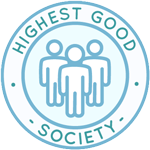 One Community is jump-starting our sustainable future through a Highest Good society approach to living that is founded on fulfilled living, the study of meeting human needs, Community, and making a difference in the world:
One Community is jump-starting our sustainable future through a Highest Good society approach to living that is founded on fulfilled living, the study of meeting human needs, Community, and making a difference in the world:
- Read the Highest Good society overview: Highest Good Society
- Learn about the model for fulfilled living and sharing: A Day in the Life
- Learn about the 4 economic models: RBE | For-profit | Non-profit | Entrepreneurship
- Learn about our open source community collaboration and management software: The Highest Good Network
This week, the core team completed over 42 hours managing volunteer work reviews, handling emails, overseeing social media accounts, supporting web development, identifying and integrating bug fixes for the Highest Good Network software, and interviewing and onboarding new volunteer team members. They also produced and integrated the video above, highlighting how jump-starting our sustainable future serves as the foundation of One Community’s broader mission. The following images showcase highlights of this work.
Jaiwanth Reddy Adavalli (Project Manager) continued developing the Job Applicants page and key components of the Highest Good Network, tracking updates in the software team management documents to assign, monitor, and support task status. He worked on the Application Dashboard by testing multiple components and creating action items to address bugs and improve existing functionality. Jaiwanth also tested multiple pull requests in the Highest Good Network software. As a member of the pull request review team, he reviewed submissions from the volunteer team assigned to him. This work supports One Community’s commitment to jump-starting our sustainable future. The images below highlight his contributions.
Rajrajeshwari Gangadhar Sangolli (Data Analyst) continued working on Google Ads management and strategy evolution of the Highest Good Network. She progressed through steps one, two, and three of administrative work while communicating with Jae to gather missing information and reviewed the work of two volunteers with detailed comments. She monitored advertising results to assess strong and weak campaigns, updated the Excel sheet used for software testing tasks, added her current tasks for tracking, and checked all pull requests and their status to determine merge readiness. She also verified task progress, rechecked the total construction summary, and performed a weekly ad performance review to identify trends and areas for improvement. Rajrajeshwari updated her bio by adding links and a work summary based on requested changes, worked through project documentation to identify items ready for merge while testing multiple accounts and websites to verify dashboard functionality, added one bug and one new task, and met with Sudarshan to discuss issues and feature ideas. She reviewed new volunteer Anusha’s work and provided suggestions for improvement and created a set of chart designs to support dashboard enhancements. This project supports One Community’s commitment to demonstrating jump-starting our sustainable future. The images below highlight key aspects of her work.
ADMINISTRATION TEAM
The Administration Team’s summary, which covers their work on the Highest Good Network, was managed by Prudhvi Marpina (Data Analyst) and includes Anusha Gali (Software Engineer), Ashutosh Mishra (Software Engineer), Divanshu Bakshi (Team Admin), Indra Anuraag Gade (Software Engineer and Team Administrator), Keerthana Chitturi (System Administrator), Mridul Bhushan (Volunteer Project Strategy Analyst and Team Administrator), Neeharika Kamireddy (Data Analyst), Olawunmi “Ola” Ijisesan (Administrative and Management Support), Olimpia Borgohain (Data Analyst and Team Administrator), Rachna Malav (Data Analyst), Rajeshwari Bhirud (Administrator), Rishi Sundara (Quality Control Engineer and Team Administrator), Rishitha Adepu (Administrator), Sai Suraj Matta Veera Venkata (Business Data Analyst), Sayantan Paul (Volunteer Frontend Tester and Software Team Administrator), and Sudarshan Raju Chintalapati Venkata (Data Analyst). The Administration Team supports the Highest Good Network, a tool designed to track and measure progress while developing systems that contribute to jump-starting our sustainable future. Through administrative support, documentation, testing, training, recruiting, analytics, and content management, the team advances jump-starting our sustainable future and aligns with One Community’s mission to build a replicable and sustainable future model.
This week, Anusha completed orientation and training for the reporting process, reviewed participant submissions, edited summaries for format accuracy, and verified images and SEO keywords for the Highest Good Network blog. Ashutosh collaborated with Suparshwa on Supabase chat storage optimization, tested new embedding methods, and refined LangChain pipelines to enhance accuracy and reduce latency. Divanshu reviewed Mastodon posts, tracked social media performance metrics, and documented new bugs and feature improvements. Indra managed the Code Crafters blog update, integrated X/Twitter analytics, developed a framework for engagement pattern analysis, and tested multiple PRs related to job posting features. Keerthana focused on administrative duties, reviewed team submissions for formatting and accuracy, updated Step 2 and 4 tracking sheets, and assigned developer action items for Phase 3. Mridul reviewed the Moonfall Team’s summaries for consistency and accuracy, prepared praise notes and alt text, debugged his WordPress page, and implemented updates based on feedback from Sara and Jae. Neeharika reviewed PR dashboard tasks, tested frontend elements, logged bugs, followed up on assignments, and interviewed two candidates for open roles. This work contributes to One Community’s commitment to jump-starting our sustainable future.
Ola managed Pinterest analytics, prepared scheduling materials, monitored metrics, and ensured data accuracy across dashboards. Olimpia updated LinkedIn analytics for October, reviewed volunteer documents, addressed admin comments, identified follow-ups and blue-square actions, and scheduled posts for the upcoming week. Rachna reviewed One Community webpages, checked updates, and stayed engaged with ongoing administrative communication. This effort supports One Community’s mission of jump-starting our sustainable future. Rajeshwari served as Administrator for Blog #653, reviewed summaries, updated WordPress with Binary Brigade content, completed feedback tracking, and tested materials and inventory features on the BM Dashboard. Rishi tested multiple pull requests, resolved merge conflicts, coordinated follow-ups via Slack, and finalized SEO updates for Blog #658. Rishitha managed bio administration, uploaded media to Threads, and updated the Social Media Master Dashboard with new Threads data. Sai Suraj enhanced the Social Media Master Dashboard by fixing technical issues, improving visual clarity, managing Facebook and Instagram content scheduling, and aligning datasets across platforms. Sayantan verified Skye team PRs, tested analytics and UI features, and provided training feedback for a new administrator. Sudarshan managed the Alpha Software Team blog, oversaw SEO and content updates, tested pull requests for Phase 2, identified bugs, added feature tasks, and coordinated developer meetings to align progress and documentation. To learn more about how this work supports One Community’s vision of jump-starting our sustainable future, visit the Highest Good Society and Highest Good Network pages. Highlights of the team’s contributions are shared in the collage below.
GRAPHIC DESIGN TEAM
The Graphic Design Team’s summary includes Qinyi Liu (Graphic Designer) and Yulin Li (Graphic Designer), who focused this week on creating graphic designs that support jump-starting our sustainable future.
This week, Qinyi updated visual and web content for marketing projects, revising social media images for consistency and clarity in line with current design standards. The work reflected jump-starting our sustainable future, using ChatGPT and MidJourney to create and refine character visuals that matched the existing aesthetic. Yulin worked on visual communication tasks, creating social media images and infographics aligned with One Community’s sustainability goals and jump-starting our sustainable future. She also posted the Highest Good Network collaboration announcement, organized assets in Dropbox, and joined weekly review discussions. Their combined efforts highlight jump-starting our sustainable future. See the Highest Good Society pages and the collage below for examples of their work.
HIGHEST GOOD NETWORK PROGRESS
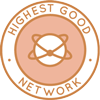 One Community is jump-starting our sustainable future through open source Highest Good Network® software that is a web-based application for collaboration, time tracking, and objective data collection. The purpose of the Highest Good Network is to provide software for internal operations and external cooperation. It is being designed for global use in support of the different countries and communities replicating the One Community sustainable village models and related components.
One Community is jump-starting our sustainable future through open source Highest Good Network® software that is a web-based application for collaboration, time tracking, and objective data collection. The purpose of the Highest Good Network is to provide software for internal operations and external cooperation. It is being designed for global use in support of the different countries and communities replicating the One Community sustainable village models and related components.
- Learn about our open source community collaboration and management software: The Highest Good Network
This week, the core team tested HGN pull requests and confirmed 10 fixed PRs. This effort highlights One Community’s commitment to jump-starting our sustainable future. The following items were not fixed: the Total Team Report tab under Reports → Reports showing 0 teams and 0 total tangible hours logged, which requires correction (PR 1743); fixing the issue with adding a new account from the User Management page; creating permission to view how many times a task has been extended (#3402); implementing dynamic scoring and ranking logic (#3471); cost prediction line chart (#3738+1528); changing CSS to module CSS (#3882); creating a grouped bar graph for the number of issues by type frontend (#3869+1651); and updating BM Dashboard CSS in ExpenditureChart.jsx (#3885). They also reviewed assigned badges for “Tester One” and logged 40 hours this week testing “New Max” and “30 Hours in Week” badges. Additionally, they reviewed PR #3983 to update user field validation when creating new users in User Management but could not test it due to a bug preventing account creation. They also created a list of necessary subjects for the Kitchen Software Proposal. This work strengthens One Community’s commitment to jump-starting our sustainable future. See the Highest Good Society and Highest Good Network pages and the collage below for an overview of the team’s contributions.
ALPHA SOFTWARE DEVELOPMENT TEAM
The Alpha Software Team, working on the Highest Good Network software, was managed by Lin Khant Htel (Frontend Software Developer). The team includes Carlos Martinez (Software Developer) and Nikita Kolla (Full Stack Developer). The Highest Good Network software is a key part of sustainable and free-shared eco-solutions, helping track and measure progress toward jump-starting our sustainable future. The software supports social architecture, construction, production, and maintenance processes that contribute to the open source project and resilient ecosystems. Designed to be portable and scalable, the Highest Good Network software is well suited for off-grid and sustainable living communities. This project reflects One Community’s open source commitment to advancing the idea of jump-starting our sustainable future that we want to build.
Lin reviewed PR #1765, tested it on a local machine, and confirmed that all 26 test cases passed. She also reviewed and verified the weekly summaries, photos, and videos submitted by Alpha Team members and handled team management responsibilities. Carlos reviewed merge conflicts related to the applicant analysis donut chart and worked on the total construction summary page. This contribution advances One Community’s goal of jump-starting our sustainable future. The CSS for the financials and donut equipment tracking components was converted to module-based CSS to improve structure, maintainability, and ensure compatibility with dark mode. Nikita worked on the task “Total Org Summary: Fix stats accuracy (NEW),” addressing discrepancies in the statistics shown on the Total Org Summary page. She updated the Reports > Reports page, resolved the inaccuracy issue by implementing changes to both the frontend and backend, documented which specific stats had discrepancies or were accurate, and included notes detailing the updates she made before completing the task. See the Highest Good Society and Highest Good Network pages for more on how this work contributed to jump-starting our sustainable future. See the collage below to view the team’s work.
BINARY BRIGADE SOFTWARE DEVELOPMENT TEAM
The Binary Brigade Team, presenting their work on the Highest Good Network software, was managed by Nikhil Routh (Software Engineer) and included Kanishk Agarwal (Software Engineer), Ramsundar Konety Govindarajan (Software Engineer), Harsha Rudhraraju (Software Engineer), Xinyi Zhou (Developer), Taariq Mansurie (Full-Stack Developer), Sumedh Kumar (Full-Stack Developer), Aswin “Tony” Kanikairaj (Software Engineer), Apoorva Jain Ramapura Prashanth (Software Engineer), and Amalesh Arivanan (Software Engineer). The Highest Good Network software is our tool for managing and objectively measuring progress, ensuring that all contributions are tracked and aligned with our mission, modeling jump-starting our sustainable future.
This week, Amalesh Arivanan worked on two priority tasks: integration tests for the reasonSchedulingController under pull request 1873, where he resolved merge conflicts and fixed failing test cases, and the development of the Phase 2 Summary Dashboard feature, which included implementing KPI tiles, a weekly task completion line chart, and a date range filter with input validation. This work contributes to One Community’s commitment to jump-starting our sustainable future. Apoorva contributed around twenty-five hours across development and review tasks, focusing on the Truth Social Autoposter feature to refine scheduling logic, manage authentication and API responses, and implement retry and logging improvements, as well as on the Mailchimp Replacement feature to stabilize frontend rendering, synchronize state with backend APIs, and finalize UI adjustments. Aswin reviewed and verified multiple frontend and backend deliverables across Phases 4 and 5, testing several pull requests for UI accuracy, data consistency, and dark mode behavior, while also reviewing task definitions and creating Figma mockups for missing components to support analytics and reporting development. This task furthers One Community’s ongoing work in jump-starting our sustainable future.
Harsha worked on the “Hits and Applications for Each Job” task, improving the frontend’s responsiveness and dark mode, implementing backend data logic, and integrating both ends to dynamically display job analytics, followed by UI refinements, error handling, and accessibility checks. This activity contributes to One Community’s plan for jump-starting our sustainable future. Kanishk implemented Phase 3 updates for the registration page by converting it to CSS modules, improving dark mode, adding loading and error states, handling real-time availability updates, and refining UI alignment and merge conflicts on the analytics branch. Nikhil worked on migrating legacy CSS files to the CSS Modules format, updating related imports and JSX references for the Community Portal, BM Dashboard, and Teams components, tracked progress on the CSS-to-Module migration task, reviewed PR 3768, investigated MongoDB timeout issues and time-logging failures, and collaborated with a team member to plan backend requirements and database table structures for an upcoming use case. Ram resolved a “page not found” issue in the Team Card on the HGN Skills Page by restoring deleted code and creating PR 4290, and updated the PR Review Team Analytics Dashboard so all checkboxes in the promotion confirmation modal are selected by default, improving workflow efficiency. This work plays an essential part in One Community’s journey toward jump-starting our sustainable future.
Sumedh addressed three issues from the Phase II document: fixing a BMTimelog bug by adding safety checks in the frontend, resolving a missing route in the Most Wasted Materials issue, and correcting a rendering and dark mode problem in the WeeklyProjectSummary page related to the Most Frequent Keyword bug. This project embodies One Community’s strategy for jump-starting our sustainable future. Taariq worked across multiple development and review activities, resolving merge conflicts, enhancing the Lesson Plan Builder UI with responsive layouts and CSS fixes, aligning implementation with design documentation, addressing archived project feature updates, and testing fixes for cache, auto-scroll, and summary report visibility issues. Xinyi resolved a dark mode issue, improved filter behavior, fixed layout and spacing in the Longest Open Issues chart, and reviewed pull requests related to the Total Org Summary to ensure consistent formatting and display. See the Highest Good Society and Highest Good Network pages for more about how this work models jump-starting our sustainable future. The collage below shows images of their work.
BLUE STEEL SOFTWARE DEVELOPMENT TEAM
The Blue Steel Software Team, working on the Highest Good Network software, was managed by Divanshu Bakshi (Product Manager) and includes Linh Huynh (Software Engineer), Humemah Khalid (Software Engineer/Backend Developer), Som Ramnani (Software Engineer),and Sheetal Mangate (Software Engineer). This week, Humemah resolved merge conflicts and implemented backend changes across multiple repositories, integrating and testing pull requests in the Highest Good Network App and HGNRest repositories (PRs 4203, 1655, 1329, 1658), and verified that existing functionality remained intact. This work supports jump-starting our sustainable future. Linh continued development of the Event Management Page within the Community Portal module, refining the file structure, linking API integrations, adjusting route paths to ensure the page loads at /communityportal/activity/:activityId/event, correcting import paths, addressing Vite configuration errors, performing local tests to fix component import failures, and preparing the environment for CSS module implementation while checking interface and navigation behavior. This work contributes to jump-starting our sustainable future.
Som addressed Quality Gate issues on the “Fix issue with Selecting Featured Badges and Saving Changes” PR by refactoring the Badge Report component, moving helper functions (createBadgeHtml, FormatReportForPdf) out of the component, removing redundant return statements, replacing forEach loops with for…of, switching to structuredClone for deep copies, adding PropTypes and defaultProps to DeleteBadgeModal and Badges components, resolving package.json conflicts, and updating BadgeReport.css to work with CSS Modules by moving the file to a shared styles folder and wrapping shared class names with :global to maintain compatibility across BadgeReport, BadgeSummaryPreview, and BadgeSummaryViz. This work further supports jump-starting our sustainable future while ensuring Husky and CI/CD compliance. Sheetal managed the weekly summary and developed a utility to automate bulk post submissions with a per-call delay to handle rate limits, built a script and endpoint for scheduled Reddit posts, and began unit testing the auto-poster logic. Felix did not provide an update this week. The collage below shows images of their work.
CODE CRAFTERS SOFTWARE DEVELOPMENT TEAM
The Code Crafters Team, covering their work on the Highest Good Network software, was managed by Sai Shekhar Reddy Moola (Software Engineer) and includes Ajay Naidu (Software Engineer), Akshith Kumar Reddy Balappagari Gnaneswara (Software Engineer – Full Stack), Chaitanya Swaroop Kumar Allu (Software Engineer), Hemanth Chimakurthi, Juhitha Reddy Penumalli (Software Engineer), Sanjeev Raichur (Software Engineer), Sphurthy Satish (Software Engineer), and Vivek Chandra (Software Engineer). The Highest Good Network software is how we’ll manage and objectively measure our progress in establishing abundant community systems through our social architecture, construction, production, and maintenance efforts, while supporting widespread and lasting eco-lifestyle access. This initiative reflects One Community’s commitment to jump-starting our sustainable future, accelerating the development of systems and behaviors that build resilience, promote innovation, and create a thriving foundation for generations to come through collaboration, regeneration, and forward-thinking design.
This week, Ajay added a paragraph element to display team member counts and implemented a button that cycles through categories so users can view totals by segment. He extended this capability to the teams page, allowing counts for total, active, and inactive members without opening a modal, built logic to compute totals per team using the team ID, verified that switching categories updated the displayed numbers correctly, and confirmed that the new styles integrated seamlessly with existing components. This work aligns with One Community’s holistic model for jump-starting our sustainable future. Akshith worked on Phase 4 of the PM Educator Training Management backend, creating the necessary database collections, controller, and router for the module. After verifying database changes and testing functionality, he documented and began resolving issues encountered during record creation and retrieval. Chaitanya continued the MailChimp replacement project, improving backend and frontend stability and scalability for the email announcement system. He fixed delivery failures, refined frontend interactions, and explored media storage and compression methods to enhance efficiency. Hemanth addressed a critical bug causing a “Something went wrong” error on the User Management page and continued developing Phase 3 of the “Event Popularity” landing page by building the full-featured Event Calendar module with new React components, a CSS grid layout, and event-specific styling fixes. This progress strengthens One Community’s mission and commitment to jump-starting our sustainable future. Juhitha progressed on Phase 4 of the Task Progress Indicator and Status Updates for the Student Portal by connecting frontend components to backend APIs for real-time student progress, improving navigation, accessibility, and data validation between the API and UI. This task contributes meaningfully to One Community’s pursuit of jump-starting our sustainable future.
Sai Moola created a MongoDB schema for request resources, implemented related controllers with POST and GET methods, and began integrating them on a dedicated backend branch. Sanjeev fixed the PermissionWatcher component to properly distinguish between mid-session permission changes and initial logins with unacknowledged permissions, introducing new states and logic for logout and acknowledgment handling while improving error recovery and state management. Sphurthy implemented grade assignments for educators by extending the EducationTask model with marks, grade scales, and submission statuses, creating endpoints for reviewing and publishing grades, optimizing loops, and ensuring style consistency with ESLint and Prettier updates. Vivek reviewed the education portal documentation, identified and took ownership of a new task management feature, analyzed the existing backend, and began designing collections and APIs for tracking task log times. These contributions strengthen One Community’s mission and commitment to jump-starting our sustainable future. See the collage below for an overview of this team’s contributions.
DEV DYNASTY SOFTWARE DEVELOPMENT TEAM
The Dev Dynasty Team’s summary, covering their work on the Highest Good Network software, was managed by Prem Vora (Software Developer) and includes Adithya Cherukuri (Volunteer Software Engineer), Aditya Gambhir (Software Engineer), Deekshith Kumar Singirikonda (Developer), Manvitha Yeeli (Software Engineer), Mohan Satya Ram Sara (Software Engineer), Neeraj Kondaveeti (Software Engineer) and Vamsidhar Panithi (Software Engineer). The Highest Good Network software is how we’ll manage and objectively measure our processes for open sourcing a better world for us all through our social architecture, construction, production, and maintenance processes. This progress supports One Community in jump-starting our sustainable future.
This week, Adithya continued work on the listing and bidding platform by developing the booking functionality, adding Joi validation for booking fields, verifying the booking flow with date conflict checks and payment verification, and beginning implementation of booking notifications using nodemailer. This work contributes to One Community’s commitment to jump-starting our sustainable future. Aditya implemented filtering functionality for the Issues Breakdown Chart in the Building Management Dashboard, creating frontend components and backend API endpoints to support project, date range, and issue type filters, with optimizations such as debouncing, AbortController for canceling stale requests, and dark mode styling. Deekshith worked on authentication and analytics features, including a PermissionWatcher component for monitoring user authentication and forced logout on permission changes, a useCountdown hook to track session timeout, Redux actions for state synchronization, event-based data structures for analytics, and an AttendanceStatistics component using Recharts to display event performance metrics. This effort supports One Community’s mission of jump-starting our sustainable future.
Manvitha worked on layout and alignment fixes, completed the CSS for the Project Manager Dashboard, and implemented dark mode theming for both the dashboard and notification modal. She addressed review comments in PR 4157 and PR 1772 by updating user-state logic to reduce multiple API calls to a single call per user and ensured authorization headers are sent properly, with the remaining issue involving backend CORS configuration. Mohan resolved the “Failed to Load Chart” error on the Utilization Chart page by improving backend aggregation to handle missing data and updating frontend logic to load charts after data retrieval with fallbacks, loading indicators, retry options, and dark mode compatibility. This project aligns with One Community’s vision for jump-starting our sustainable future. He also worked on cleaning up older frontend pull requests related to PR 2677 and PR 1966 by aligning previous UI changes, confirming behavior through manual testing, and documenting remaining inconsistencies. Neeraj worked on the Help Request Form by enabling functional form submission, updating the submit button behavior, changing header labels to display “Team Leader Name,” and converting related CSS files into CSS modules for better styling isolation. Prem resolved event image loading and CORS-related issues, added pagination for event listings, updated date-based filtering to use local time, refined radio button deselection behavior, and fixed the “This Weekend” filter logic to correctly display only upcoming events. Vamsidhar addressed a data update issue in the Equipment module by ensuring new equipment types appear immediately after addition without requiring a page refresh, updated Redux logic to refresh data automatically, resolved Node.js compatibility issues with Husky hooks, and verified consistent functionality following the migration to Vite. See the Highest Good Society and Highest Good Network pages for more on how this relates to our mission of jump-starting our sustainable future. Explore some of the team’s work in the collage below.
EXPRESSERS SOFTWARE DEVELOPMENT TEAM
The Expressers Team’s summary, which covers their work on the Highest Good Network, was managed by Rahul Trivedi (Software Engineer) and includes Layne Taylor (Software Engineer), Meenashi Jeyanthinatha (Full-Stack Developer), and Tanmay Arora (Software Engineer). This contribution supports One Community’s goal of jump-starting our sustainable future.
This week, Meenashi worked on the Job Application Workflow. The job application form responses are now stored in the jobApplications collection, and when a user submits an application, the uploaded resume is saved to Dropbox through the Dropbox API, currently configured with a personal Dropbox folder for testing. An email notification is generated with the application details. Pending work includes saving the Dropbox API response, which contains file metadata such as path, name, and share link, into the formResponse so the uploaded file can be attached or linked in the email sent to the employer. Updates were made to both the front end and back end to support file uploads, displaying an “Uploading” status and then a “View” link upon completion. The submission email now includes the Dropbox file link for file-type inputs. Current issues include inconsistent question order, which changes with each submission, and the ability to submit an application without completing required fields, indicating a need for improved form validation. This contribution supports One Community’s goal of jump-starting our sustainable future.
Layne worked on the task “Add Functionality for ‘Add Material’ Button on Materials Page.” She created her own branches on both the front end and back end, built a modal that opens and displays the existing AddMaterial component when the “Add Material” button is clicked, and ensured the front-end portion is essentially complete. The back-end portion had already been finished. Layne noted the dropdown menu currently allows users to select an existing material, which triggers an “oops!! Material already exists!” error, and she plans to create a separate modal component that limits the dropdown to the “other” option so only new materials can be added. She also requested clarification regarding the invoice number or ID for the feature. This task furthers One Community’s ongoing work toward jump-starting our sustainable future. Rahul focused on resolving merge conflicts in PR 4212, updating .css files to the .module.css format, and maintaining consistency across the project. He continued working on conflicts within the src/Reports directory, managed team-related responsibilities including reviewing summaries and video submissions, and ensured overall coordination. This contribution supports One Community’s goal of jump-starting our sustainable future.
Tanmay worked on completing the Mastodon auto-poster integration across backend and frontend. On the backend, he implemented and refactored the Mastodon controller, model, router, and cron job to handle immediate and scheduled posting, simplified access token retrieval, standardized request headers, and verified API communication using Postman. On the frontend, he added the Mastodon tab, integrated it into the SocialMediaComposer component, connected the “Post to Mastodon” button with the backend API, and tested the full workflow. While scheduling functionality remains backend-only, he documented proposed frontend improvements. This work plays an essential part in One Community’s journey toward jump-starting our sustainable future and supports One Community’s goal of jump-starting our sustainable future. See the Highest Good Society and Highest Good Network pages for more on how this contributed to jump-starting our sustainable future. See the collage below for the team’s work.
LUCKY STAR SOFTWARE DEVELOPMENT TEAM
The Lucky Star Team’s summary, covering their work on the Highest Good Network, was managed by Keerthana Chitturi (System Administrator) and Abhiram Bylahalli Jagadish (Full Stack Software Developer). The team includes contributions from Abhishek Jain (Software Engineer), Aryan Rachala (Software Engineer), Chirag Bellara (Software Engineer), Dipti Yadav (Software Engineer), Durga Venkata Praveen Boppana (Software Engineer), Ganesh Karnati (Software Engineer), Shashank Madan (Software Engineer), Shravya Kudlu (Software Development Engineer), Sohail Uddin Syed (Software Engineer), Veda Bellam (Software Engineer), and Venkataramanan Venkateswaran (Software Engineer). Their work supports One Community’s goal of jump-starting our sustainable future through cross-functional software development.
This week, Abhiram worked on backend development for the Highest Good Education portal, focusing on the educator task submission feature in the branch feature/abhiram-educator-task-submissions. He built an API endpoint for retrieving finished student tasks with filters for course, status, and student, returning key fields such as student name, task, type, status, and submission date. His work included correcting Mongoose model references, resolving ESLint warnings, implementing logic for dynamic task lists and review workflows, and testing backend endpoints to ensure stable performance and accurate data delivery. This backend progress supports jump-starting our sustainable future. Abhishek continued improving code quality and project organization by addressing SonarQube issues identified in his pull request. He resolved technical debt and code quality concerns flagged by the static analysis tool, making necessary corrections to meet standards, and created additional ClickUp tasks to track emerging work items. This focus on quality control contributes to jump-starting our sustainable future. Aryan concentrated on Deliverable 5 (Analytics and Reporting), creating five new tasks for backend and frontend components related to student and class performance reports, analytics integration, and dashboards. He also reviewed progress on Deliverable 4, including backend and frontend work for the PM Educator Training and Badge System integration. His planning and coordination efforts support jump-starting our sustainable future. Chirag completed the “Tomorrow” fix, implementing and testing all related updates. He added a “Clear Date Filter” button, generated mock data for 15 days, confirmed styling consistency through global CSS modules, and opened pull request #4304. This implementation supports jump-starting our sustainable future. Dipti focused on the feature “Fix making mousing over a task show who added/created the task.” She updated the backend by adding a createdBy field, adjusted controller logic and tests, and modified the frontend to display the creator’s name on hover. She verified the functionality, conducted regression testing, and submitted a pull request with a demo video. This enhancement supports jump-starting our sustainable future. Durga resolved a system date issue affecting clock-in functionality and updated the student evaluation form’s layout for better usability. He also worked on resolving merge conflicts in two pending pull requests, to maintain consistency with the main development branch. This progress contributes to jump-starting our sustainable future.
Ganesh refined the PR Grading interface’s CSS and dark-mode design, improving layout, responsiveness, and hover effects. He enhanced the color contrast, typography, and interactive transitions to create a more accessible and cohesive UI. This visual refinement supports jump-starting our sustainable future. Shashank modified the API to allow assigning multiple atoms to a student in a single request, developed modals for atom assignment, created the router and controller, and resolved merge conflicts from prior pull requests. This backend and frontend foundation contributes to jump-starting our sustainable future. Shravya worked on Assisted functionality (POST/PUT) and authentication under pull request #1874, updating schemas and validation logic, fixing UUID-related issues, and integrating the frontend design per Sigma specifications. She completed initial testing and ensured data accuracy across educator views. This backend and frontend integration supports jump-starting our sustainable future. Sohail resolved merge conflicts in pull requests #1394 and #1193, tested the fixes, and continued improving email functionality. He confirmed that emails with the same subject line create a new thread if sent a week apart and proposed appending dates to subject lines for unique weekly threads. These workflow improvements contribute to jump-starting our sustainable future. Veda focused on developing the Job Posting Page Analytics feature, implementing schema design, controller logic with outlier detection, and backend routes for data visualization. She integrated these APIs into the analytics system, configured CORS and authentication, and verified chart rendering and data handling. This analytics enhancement supports jump-starting our sustainable future. Venkataramanan fixed interface and functionality issues in the HighestGoodNetwork app, including button alignment, progress bar width, and pie chart visibility, and added the ability to download user timelogs as PDFs. He also collaborated with Jae to test and validate UI fixes in deploy previews. These contributions help jump-starting our sustainable future progress. See the Highest Good Society and Highest Good Network pages to learn more about how this work supports jump-starting our sustainable future. See the collage below highlighting the team’s work for the week.
MOONFALL SOFTWARE DEVELOPMENT TEAM
The Moonfall Team’s summary, which covers their work on the Highest Good Network, was managed by Bhavpreet Singh (Software Engineer) and includes Aayush Shetty (Software Engineer), Alisha Walunj (Software Engineer), Mani Shashank Marneni (Software Engineer), Ramakrishna Aruva (Software Engineer), Sudheesh Thuralkalmakki Dharmappa Gowda (Full Stack Developer), Uha Kruthi (Software Engineer), and Zhicheng Tong (Software Engineer). Their efforts advance One Community’s mission of jump-starting our sustainable future, promoting open source collaboration, ecologically responsible innovation, and holistic global progress.
This week, Bhavpreet worked on developing the backend code for the browse lesson plan feature and prepared the frontend for integration, completing the feature’s functional setup by the end of the week. He also worked on the teaching children groups frontend to improve robustness, optimize performance, and support scalability, in addition to handling managerial duties later in the week. This work plays an essential part in One Community’s journey toward jump-starting our sustainable future. Zhicheng focused on multiple development tasks for the HighestGood Network software project, including investigating the “Something went wrong” error on the BM Dashboard to View Issues flow by reproducing the issue and analyzing logs for debugging. He advanced the log visualization module by refining component architecture, integrating performance improvements using React.memo and useCallback, enhancing react-virtualized for smoother scrolling, and adding dynamic filtering and lazy-loading for better large dataset handling. This effort adds momentum to One Community’s initiative focused on jump-starting our sustainable future. He also began evaluating caching and virtualization to reduce render overhead and conducted profiling to assess responsiveness and memory improvements. Ramakrishna worked on establishing the WebSocket reconnection process, designing the CSS and functionality for the refresh button, and addressing offline detection and disconnection handling. He investigated an issue where the application paused after inactivity and analyzed the WeeklySummary code to understand its structure for an upcoming task. This work aligns with One Community’s holistic model for jump-starting our sustainable future.
Sudheesh worked on Phase 2 of the project by creating a chart for the materials utilization ratio, setting up Mongoose schemas, adding backend routes, and developing controller logic to calculate and display utilization ratios. He also populated mock data for testing after completing the feature. Aayush worked on fixing the dark mode issue on the Lessons form page by updating relevant files, resolving merge conflicts, and submitting a pull request. This update reflects One Community’s ongoing dedication to jump-starting our sustainable future. He began addressing a BM Dashboard issue where the Tools form dropdown did not display the tool list, identifying the necessary files for modification, and also documented progress by uploading images and submitting his weekly summary. Alisha worked on both backend and frontend components of the Learner Knowledge Evolution View, configuring the atoms display using mock data, adding search and filter functions, and updating page design elements such as node sizes, borders, colors, and tab headers. On the backend, she improved data integration in the Knowledge Evolution controller by refining lookup stages, fixing joins for grades and studentAtoms, and structuring grouped results by subject for frontend use. This task contributes meaningfully to One Community’s pursuit of jump-starting our sustainable future. Mani completed the Education Portal Student Progress feature from Phase 4, enhancing chart visuals, improving layout consistency, introducing dynamic subject icons, and refining the student profile interface with cleaner designs and better spacing. The completed updates were submitted in Frontend PR #4297 and Backend PR #1866. Uha worked on resolving critical errors and improving stability in the Longest Open Issues chart, fixing ESLint and Prettier violations, addressing Vite import and JSX accessibility issues, and enhancing CSS module integration, along with UI adjustments for dark mode and responsive layouts. Visit the Highest Good Society and Highest Good Network pages for more on how this work supports jump-starting our sustainable future through open source development and globally accessible resources. The collage below illustrates the significant team milestones of this week.
REACTONAUTS SOFTWARE DEVELOPMENT TEAM
The Reactonauts Team’s summary, covering their work on the Highest Good Network, was managed by Sai Suraj Matta Veera Venkata (Business Data Analyst) and Akshay Jayaram (Software Engineer). The team includes Aseem Deshmukh (Software Developer), Diya Wadhwani (Software Developer), Guna Pranith Reddy Cheelam (Software Developer), Kristin Dingchuan Hu (Software Engineer), Namitha Vijaykumar Pawar (Software Engineer), Peterson Rodrigues dos Santos (Full Stack Developer), Siva Putti (Software Engineer), Sri Satya Venkatasai Siri Sudheeksha Vavila (Software Engineer), Suparshwa Patil (Software Engineer), Tom Linn (Software Engineer), and Ujjwal Baranwal (Full-stack Software Developer). The Highest Good Network software helps manage and objectively measure progress by focusing on demonstrating modeling jump-starting our sustainable future. It supports social architecture, construction, production, and maintenance processes to build sustainable and thriving ecosystems.
This week, Akshay completed task 4313 and opened backend pull request 1876 to add the weekly summaries count feature on the Tasks page by modifying taskHelper.js to include weeklySummariesCount from userProfiles in MongoDB and integrating the data into the frontend with hover text and dark-mode styling. Aseem improved bar graph readability by resizing axes and labels, adding tooltips, a reset-filter button, and fixing dark-mode display issues. Guna continued work on the listings home-page frontend in PR 3999 and investigated the “Page not Found” error in Re-Engagement Strategies to restore the /communityportal/activity/:activityid/logattendance URL. Kristin revised PR 3851 for the Promotion Eligibility Table page by connecting API calls, fixing 401 errors, resolving CSS module conflicts, and ensuring tests passed. Namitha worked on PR 4296 for Phase 4 Announcements Frontend, aligning modal styling with design standards, adding hover and focus states, and applying CSS modules for visual consistency. This work aligns with One Community’s guiding principle of jump-starting our sustainable future.
Peterson fixed the Assign Badges modal checkbox bug in PR 4288 so selections now persist after clicking. Siva addressed alignment issues for End Date and Status on the Profile Page in PR 3867 and corrected button placement in PR 4311 to match Figma designs. Sudheeksha spent 20 hours on debugging the BMDashboard projects section, restoring Daily Logging Button Links, fixing help-request form submission, and implementing dark-mode styles for the Member List page. Suparshwa designed and implemented a chatbot user interface connected to backend endpoints and resolved merge conflicts in a backend PR to maintain code stability. Tom worked on the resource usage overview page in PR 3399, integrating a CSS module, testing search and log features, and identifying non-functional elements in the Add New Log and Dark/Light mode toggle. Ujjwal completed the InjuryChart (Most Wasted Materials) feature, rebuilding the grouped and stacked bar chart with filters and creating frontend PR 4316 while also improving formatting on the Total Construction Summary page and debugging dark-mode update issues. See the Highest Good Network and Highest Good Society pages to learn more about how this work supports modeling jump-starting our sustainable future. See below for the work done on demonstrating modeling jump-starting our sustainable future.
SKYE SOFTWARE DEVELOPMENT TEAM
The Skye Team’s summary, covering their work on the Highest Good Network, was managed by Sayantan Paul (Frontend Tester and Software Team Administrator) and Anthony Weathers (Software Engineer). The team includes Julia Ha (Software Engineer), Lavanya Lahari Nandipati (Software Developer) and Marcus Yi (Software Engineer). The Highest Good Network software helps manage and objectively measure progress by focusing on jump-starting our sustainable future. It supports social architecture, construction, production, and maintenance processes to build sustainable and thriving ecosystems. This solution is portable, scalable, and ideal for off-grid or sustainable living communities – an example of jump-starting our sustainable future.
This week, Anthony continued work on the Email Automation task by investigating how messageId, In-Reply-To, and References values affect email threading behavior. He confirmed that Gmail threads by subject and timing rather than messageId. Outlook depends more on messageId but behaves inconsistently. With his team, he determined that adding a unique subject value is the most reliable way to separate weekly email threads. He also identified a permissions mismatch causing a button not to appear for a user and confirmed that the required permissions should be updated with one outdated permission removed. Julia reviewed backend PR#1396, merged it with the development branch, and resolved conflicts. She confirmed proper backend-frontend integration but found the returned data did not align with expected application content. After aligning with stakeholders on the approach, she developed a backend API for AWS S3 file uploads with validation for file type, size, and URL format and created PR#1868. This work contributes to One Community’s commitment to jump-starting our sustainable future.
Lavanya resolved backend issues in the HGNRest project by debugging Express route conflicts that prevented server startup. She updated db.js to support both local and Atlas MongoDB via environment variables and confirmed successful connectivity to the local hgnData_dev database. She fixed a MongoDB $regex initialization error using fallback environment variables, verified that the server runs correctly on port 4500 with expected route initialization, and recreated local user profiles to resolve authentication issues, confirming that the backend now reaches password validation. Marcus added new tabs and fixed spacing issues in the OnlyWire wireframe. This included introducing a weekly report button tab and reorganizing existing tabs for improved alignment and functionality. He also addressed code quality feedback after pushing his pull request. See the Highest Good Society and Highest Good Network pages for more on how this contribution advances One Community’s goals for jump-starting our sustainable future in the Highest Good Network open source hub. See the collage below for the team’s work.
SOFTWARE PR REVIEW TEAM A-Z
The PR Review Team’s summary, covering their work on the Highest Good Network software, was managed by Jaiwanth Reddy Adavalli (Software Project Manager). The Highest Good Network software is a foundation for measuring our results in jump-starting our sustainable future. This week’s active members of this team were: Abdelmounaim Lallouache (Software Developer), Carl Bebli (Software Developer), Maneesh Buddha (Software Developer), Nathan Hoffman (Software Engineer), Sundar Machani (Software Engineer), Vinay Krishna (Software Engineer), and Yiyun Tan (Software Engineer). They reviewed all the Highest Good Network PRs (Pull Requests) shared in this week’s update. Learn more about how the Highest Good Network measures progress toward jump-starting our sustainable future by visiting the Highest Good Network open source hub. The collage below shows a compilation of the team’s work.
AND WE PRODUCED THIS WEEKLY UPDATES BLOG – CLICK HERE TO SUBSCRIBE
FOLLOW ONE COMMUNITY’S PROGRESS (click icons for our pages)
INVESTOR PAGES
GET INVOLVED
One Community Welcomes Divanshu Bakshi to the Admin Team!
Posted on October 31, 2025 by One Community Hs
One Community welcomes Divanshu Bakshi to the Admin Team as our newest Volunteer/Consultant!
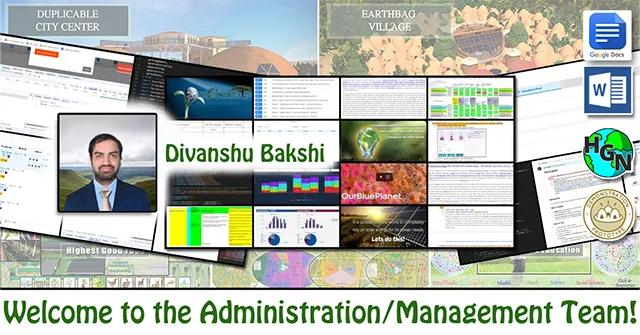
Divanshu is a business analyst with over three years of experience delivering process and technology solutions in Agile environments. He specializes in requirements elicitation, stakeholder management, process mapping, and translating complex business needs into clear user stories and acceptance criteria that align product, engineering, and QA teams. As a member of the One Community Team, Divanshu has defined and organized requirements and deliverables for Highest Good Network Phase 2, authored acceptance criteria, and Mastodon-ready outreach content, migrated task trackers to a unified spreadsheet, and produced dashboards and documentation used by product and engineering teams to prioritize and verify work.
WELCOME TO THE TEAM DIVANSHU!
FOLLOW ONE COMMUNITY’S PROGRESS (click icons for our pages)
INVESTOR PAGES
GET INVOLVED
One Community Welcomes Prudhvi Marpina to the Admin Team!
Posted on October 31, 2025 by One Community Hs
One Community welcomes Prudhvi Marpina to the Admin Team as our newest Volunteer/Consultant!
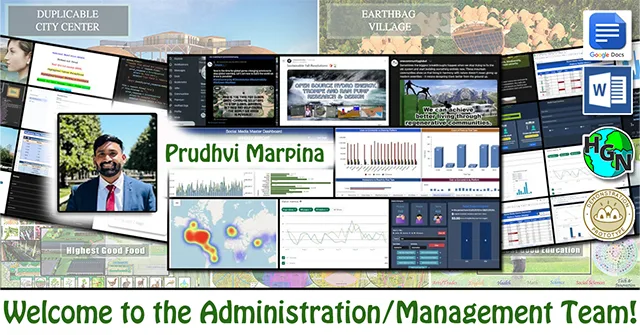
Prudhvi is a data-focused software engineer with over four years of experience building intelligent, data-driven systems that combine analytics, automation, and product strategy. He has developed end-to-end pipelines, APIs, and machine learning tools using modern technologies to streamline processes and enable insight-based decision-making. As a member of the One Community Team, Prudhvi has contributed to social media analytics, program management, and AI music automation, improving dashboards, posting strategies, and data tracking systems to enhance collaboration and community engagement for the Highest Good Network.
WELCOME TO THE TEAM PRUDHVI!
FOLLOW ONE COMMUNITY’S PROGRESS (click icons for our pages)
INVESTOR PAGES
GET INVOLVED
One Community Welcomes Rahul Kulkarni to the Engineering Team!
Posted on October 30, 2025 by One Community Hs
One Community welcomes Rahul Kulkarni to the Engineering Team as our newest Volunteer/Consultant!
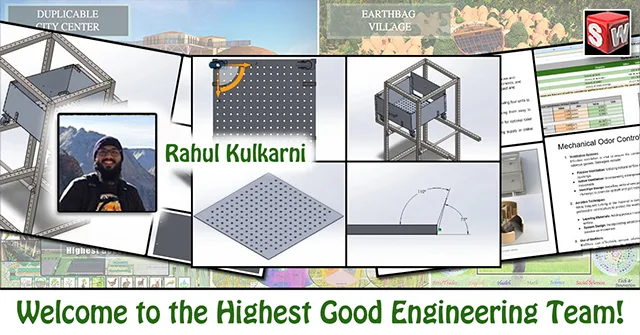
Rahul has experience in mechanical design, product development, and R&D across the medical device, automotive, and robotics industries. His work includes fixture design, tolerance analysis, and product validation for medical devices, as well as motion system design for humanoid robots. He has a strong background in CAD modeling, GD&T, and design optimization. Rahul is passionate about sustainable engineering and the integration of efficient mechanical systems in real-world applications. As part of the One Community Engineering Team, he has contributed to the Vermiculture Eco-toilet project, focusing on drawer modification, wastewater drainage design, and the integration of mechanical assemblies to improve functionality and manufacturability.
WELCOME TO THE TEAM RAHUL!
FOLLOW ONE COMMUNITY’S PROGRESS (click icons for our pages)
INVESTOR PAGES
GET INVOLVED
One Community Welcomes Carlos Martinez to the Software Development Team!
Posted on October 30, 2025 by One Community Hs
One Community welcomes Carlos Martinez to the Software Development Team as our newest Volunteer/Consultant!
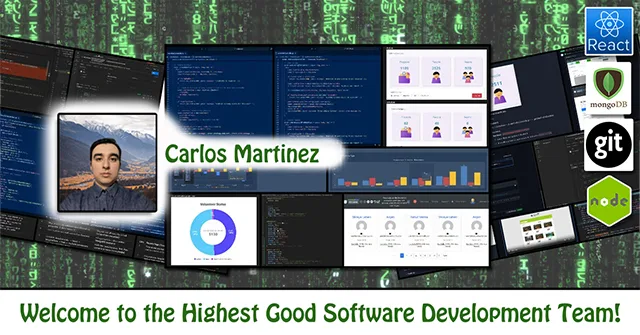
Carlos is a dedicated software developer specializing in web development. He is completing his Bachelor of Science in Computer Science at California State University, East Bay. With extensive experience in MongoDB, Express, React, and Node, Carlos seamlessly integrates into full-stack roles, contributing to various applications such as the Blue Squares System, bidding platform, and user profiles. As a member of the One Community Team, Carlos has helped improve the user experience on the site and create components that visualize applicant data for processing. Recently, he enhanced the Highest Good Network Skills Forms and Skills Profiles by implementing CSS modules and dark mode for an improved user experience.
WELCOME TO THE TEAM CARLOS!
FOLLOW ONE COMMUNITY’S PROGRESS (click icons for our pages)
 One Community
One Community